A Weekend Escape to Jeonju Arboretum: Embracing Spring’s Scents and Blossoms.
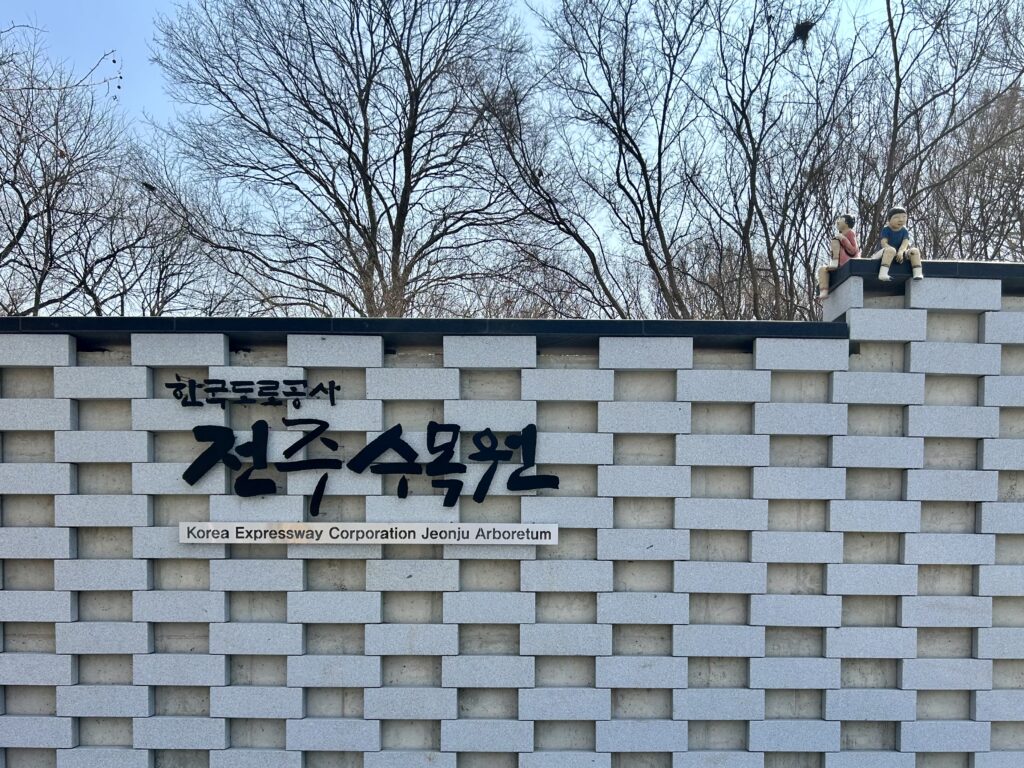
Despite a late cold snap with snow in mid-March, the weather quickly warmed, and the signs of spring are now bursting everywhere.
With the pleasant weather, I decided to take a weekend trip to Jeonju Arboretum, eager to soak in the spring flowers.

The arboretum has undergone recent renovations, presenting a refreshed look to visitors.
The entrance has been widened, creating a more welcoming approach.

The parking area has also been significantly expanded, to address the previous challenge of finding parking on busy weekends.

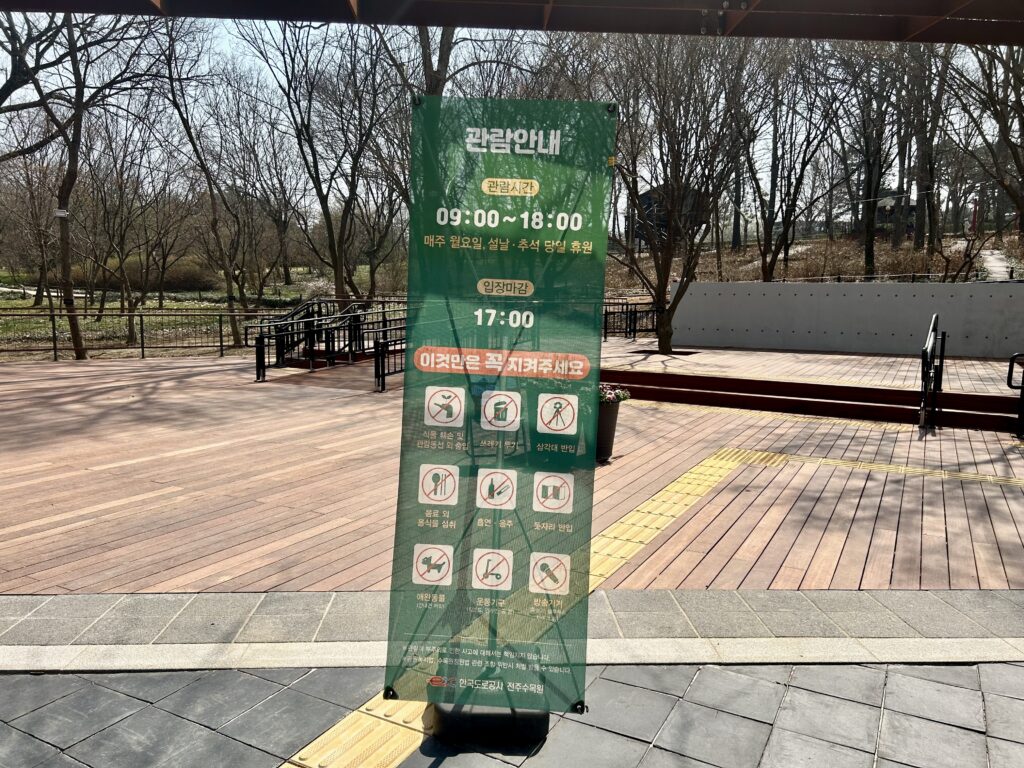
Jeonju Arboretum, managed by the Korea Expressway Corporation, was established in 1974 to restore the natural environment inevitably impacted by highway construction.
Spanning 196 hectares and showcasing approximately 3,899 plant species, this arboretum is a renowned attraction in Jeonju especially during the spring bloom, drawing numerous visitors.
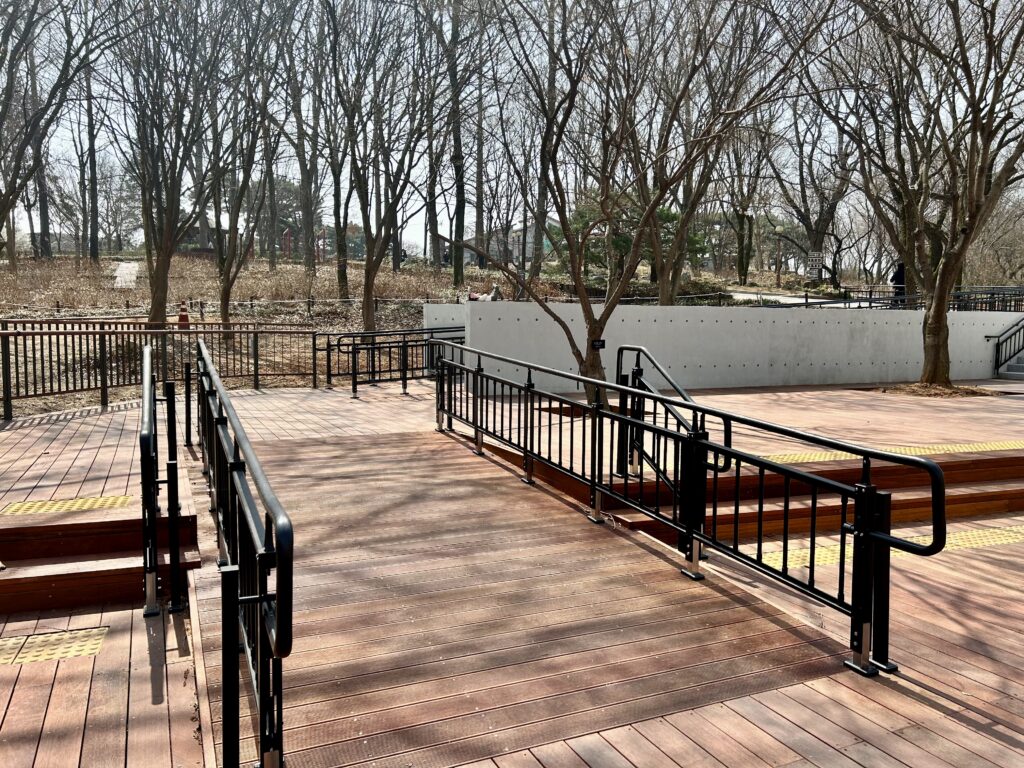
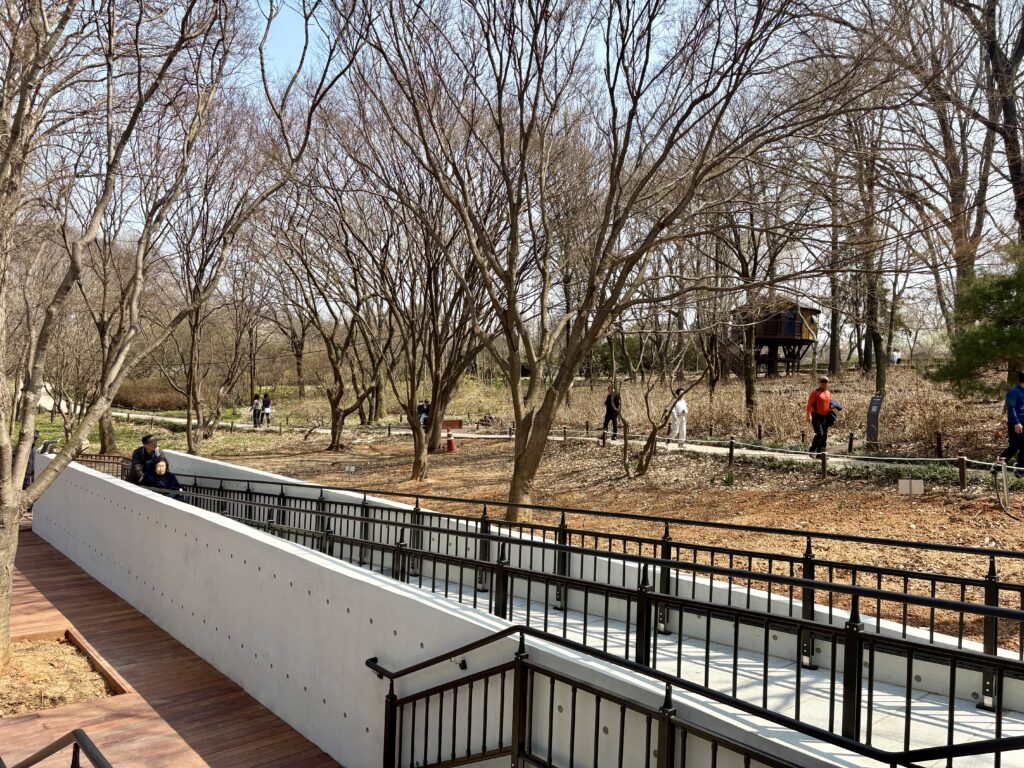
Previously, the path leading to the arboretum felt steep like a hill climb, but now, accessible paths have been created, allowing easy navigation for wheelchair users and the elderly.

Clear signs guide visitors to their desired areas.
I began my exploration to the right where the Aquatic Plant Garden, Rose Garden, and Rock Garden are located.
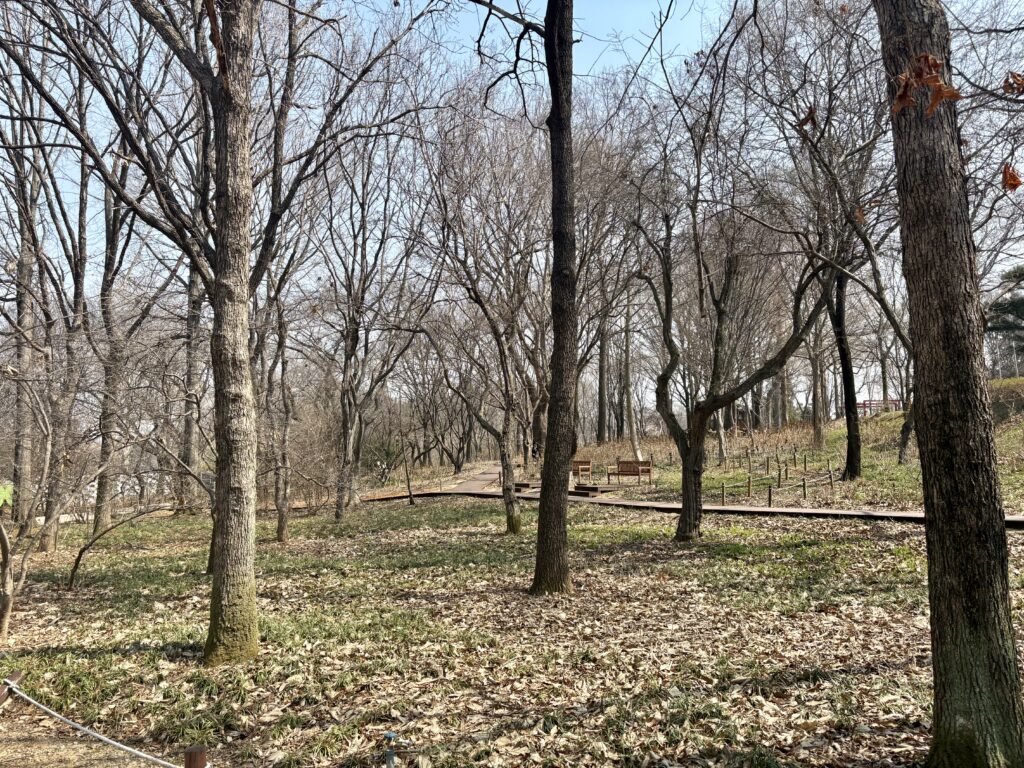
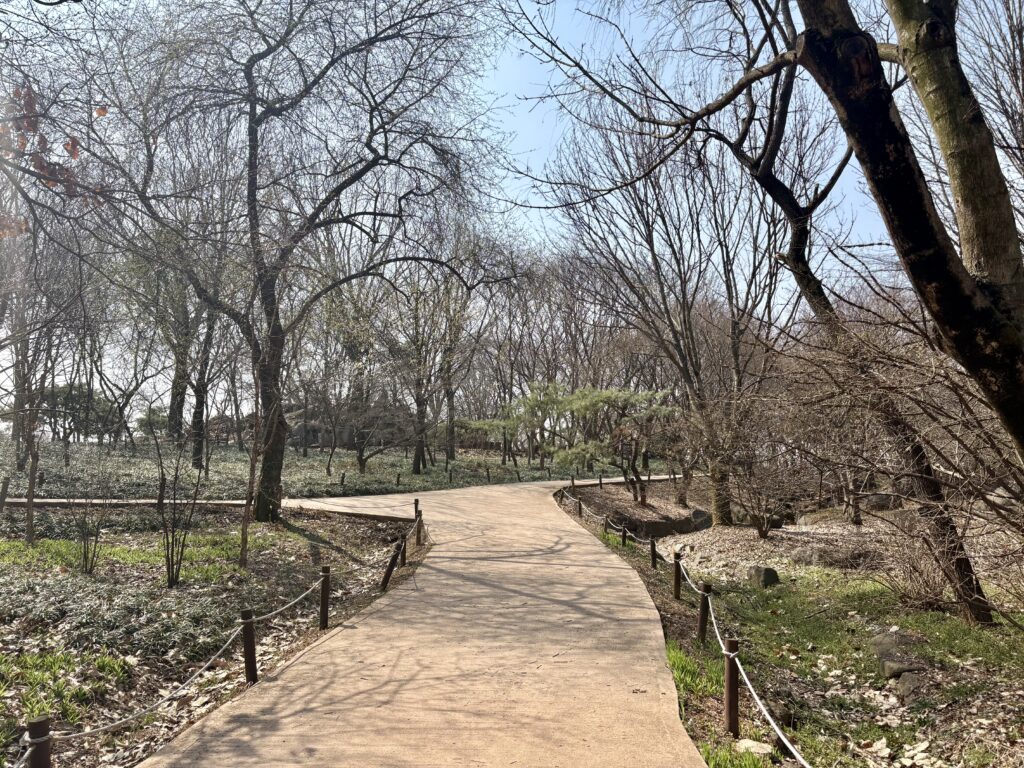
While the landscape still held a hint of winter, a closer look revealed the undeniable arrival of spring.
After the cold relented, my weekend visit to Jeonju Arboretum allowed me to fully immerse myself in the spring scents and blossoms.
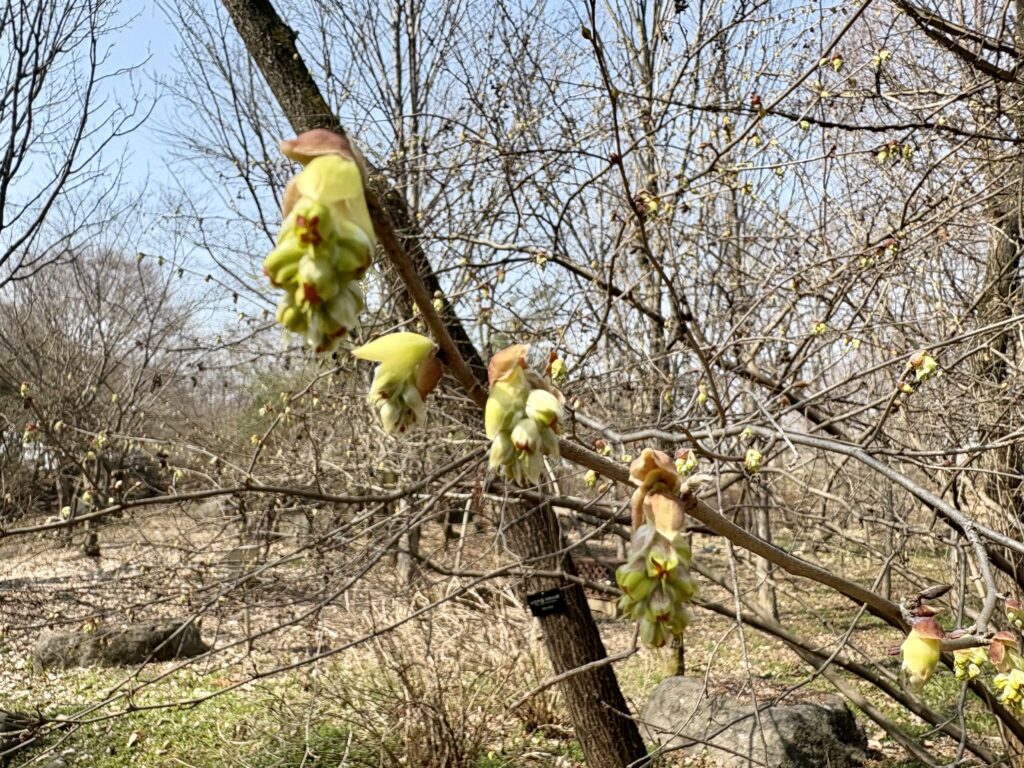
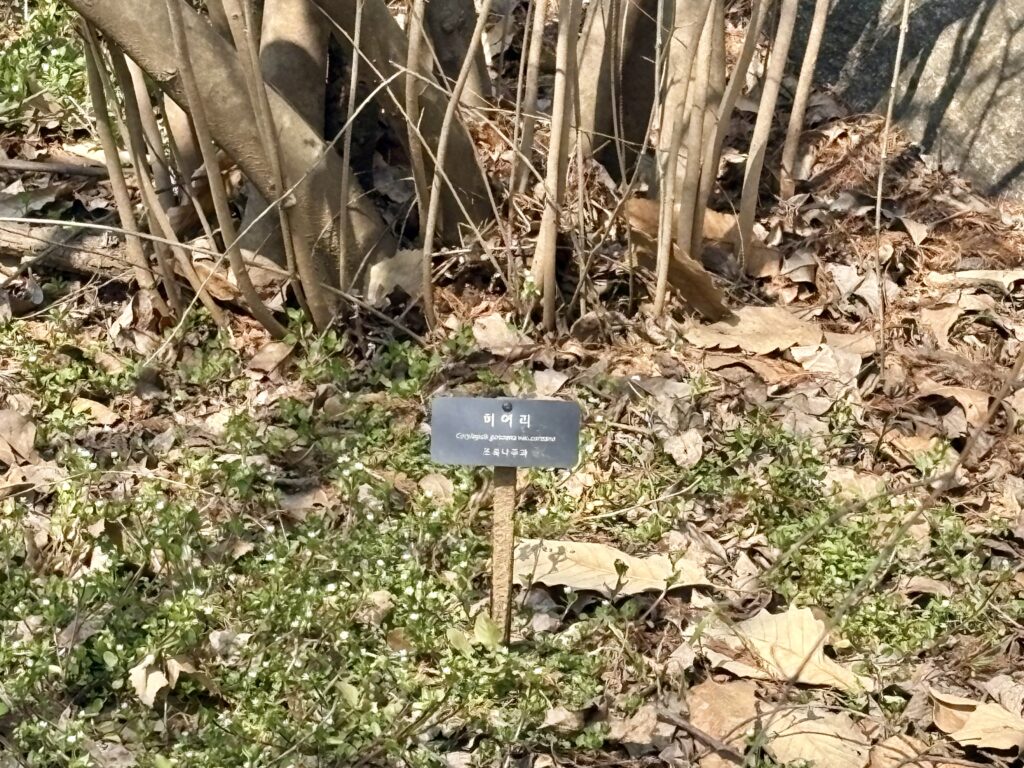
Upon entering, I noticed new shoots emerging from the plants that had spent the winter dormant.
Examining the flower buds closely, I saw a name tag labeled “Hieori” (Korean Winter Hazel).
This native Korean wildflower, whose name translates to “Spring Song,” blooms early, with leaves appearing later.
While forsythia is often the first spring flower that comes to mind, I now believe I’ll remember Hieori as well.

I ventured into the greenhouse.
Inside, a variety of succulent and tropical plants thrived, interspersed with numerous beautiful flowers.
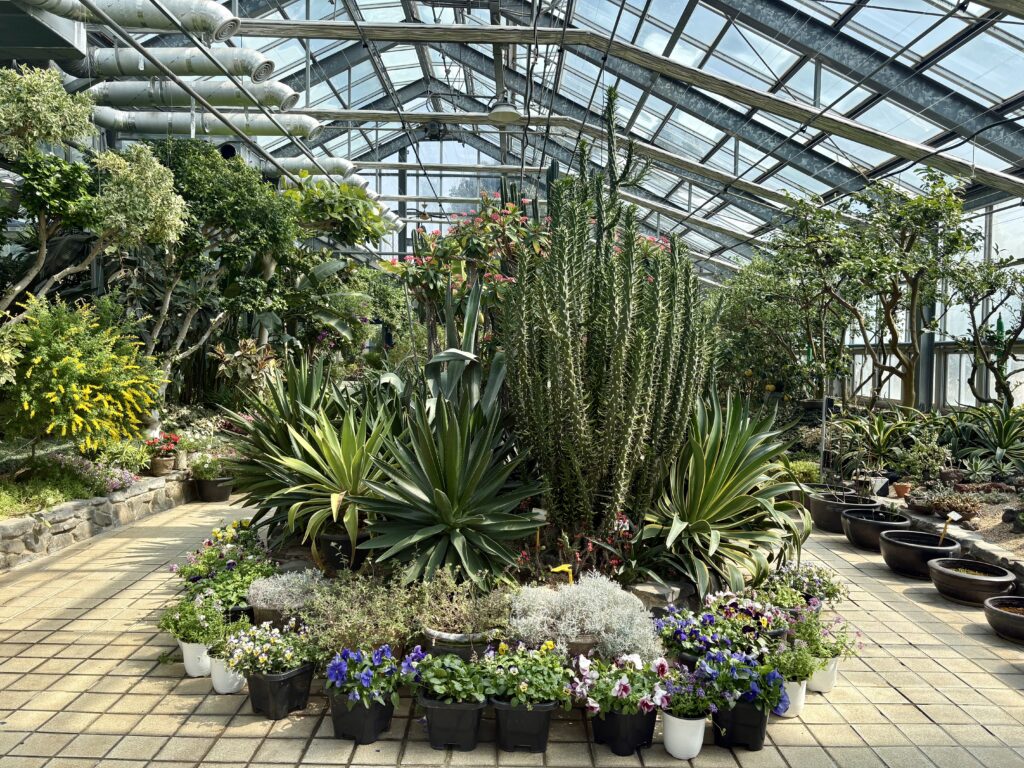
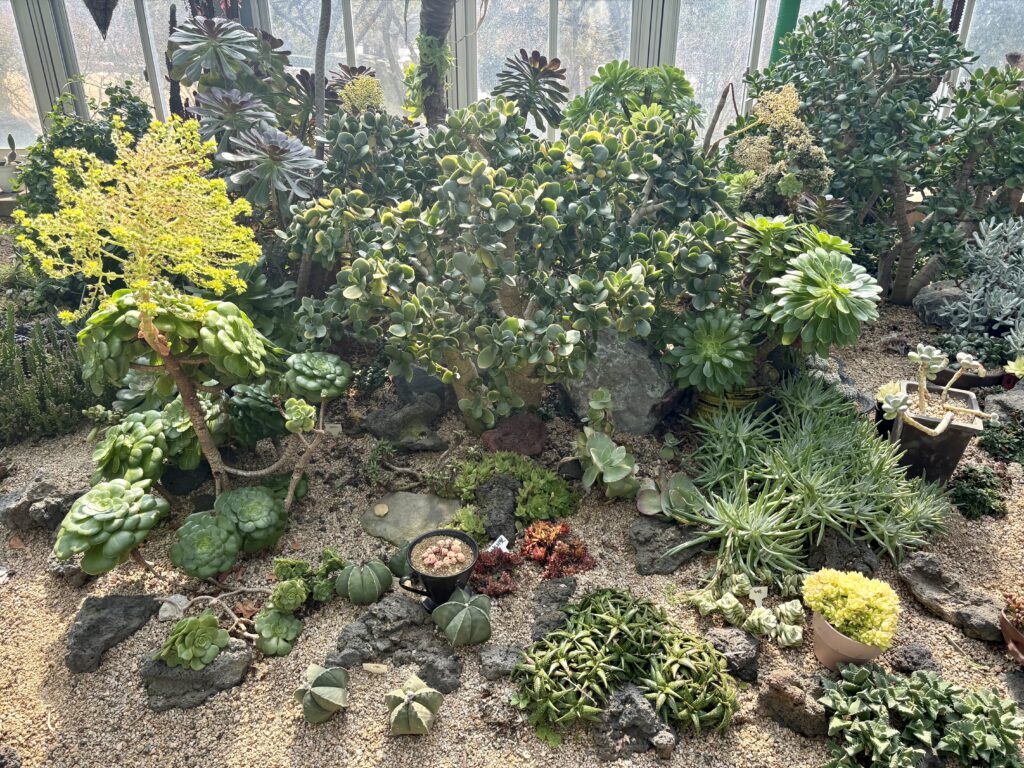

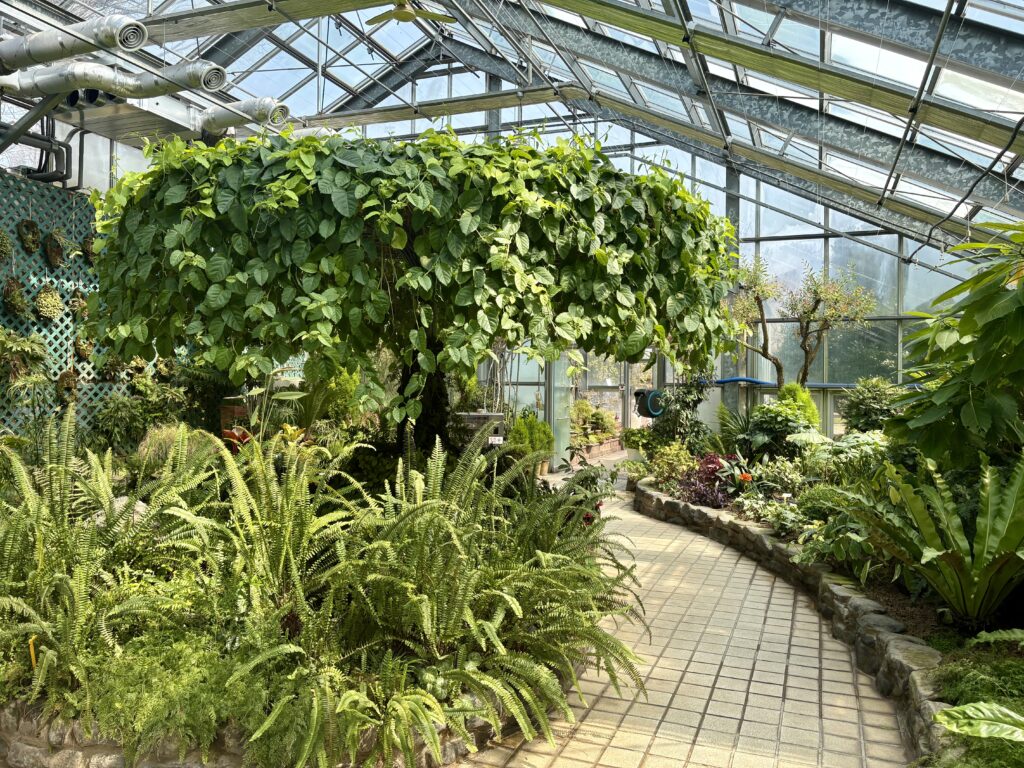
The greenhouse plants were lush and vibrant.
A giant cactus particularly caught my attention.
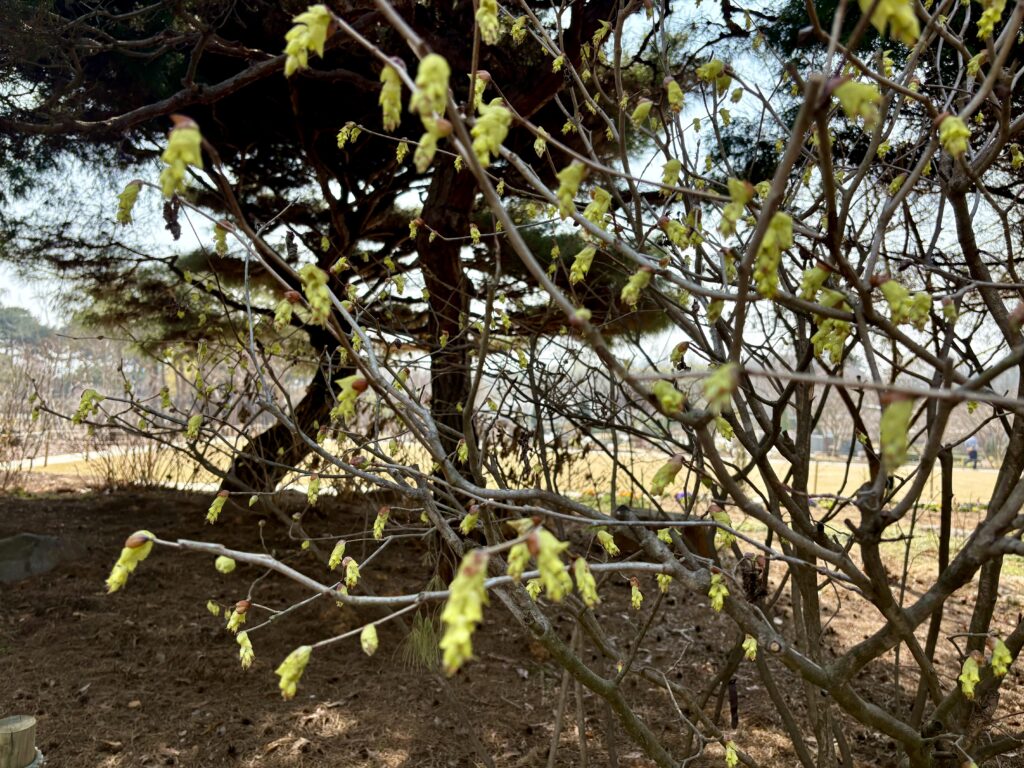
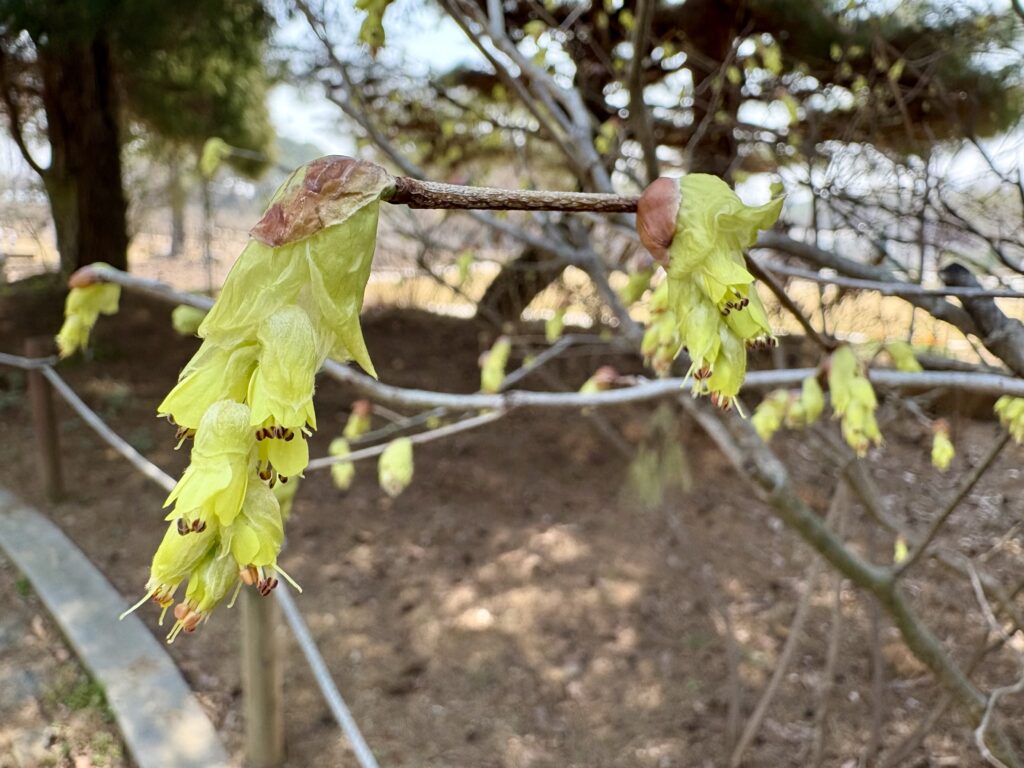
Upon exiting the greenhouse, I encountered the “Hieori” plant again, now in full bloom, its shape resembling lantern flowers.
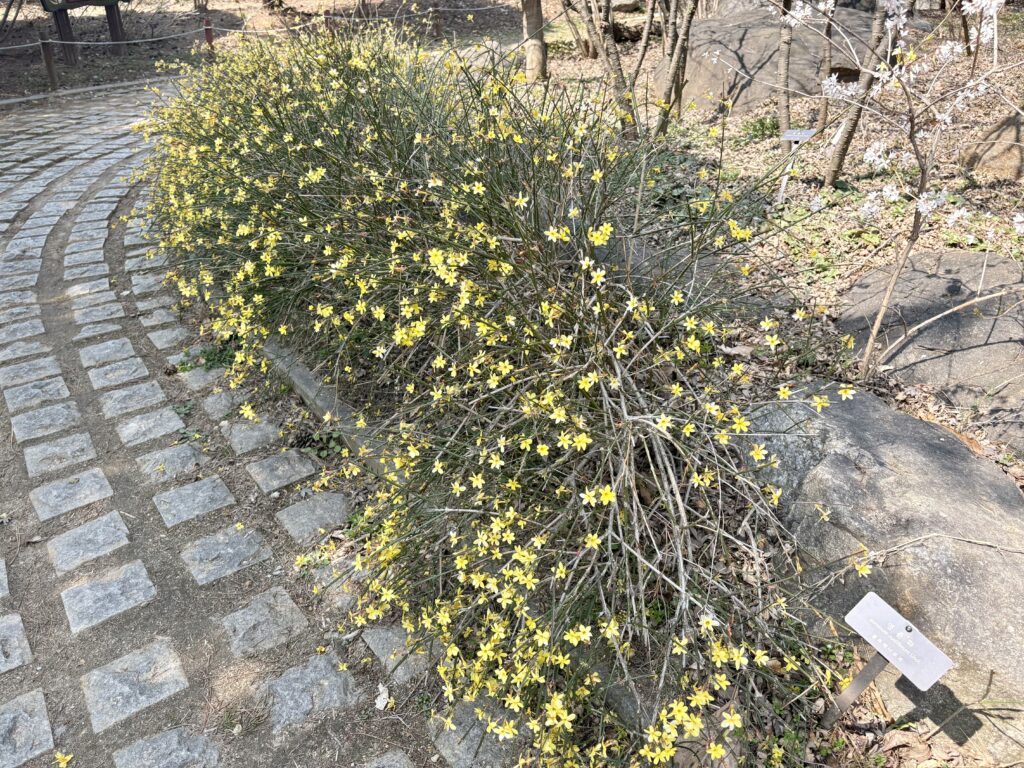
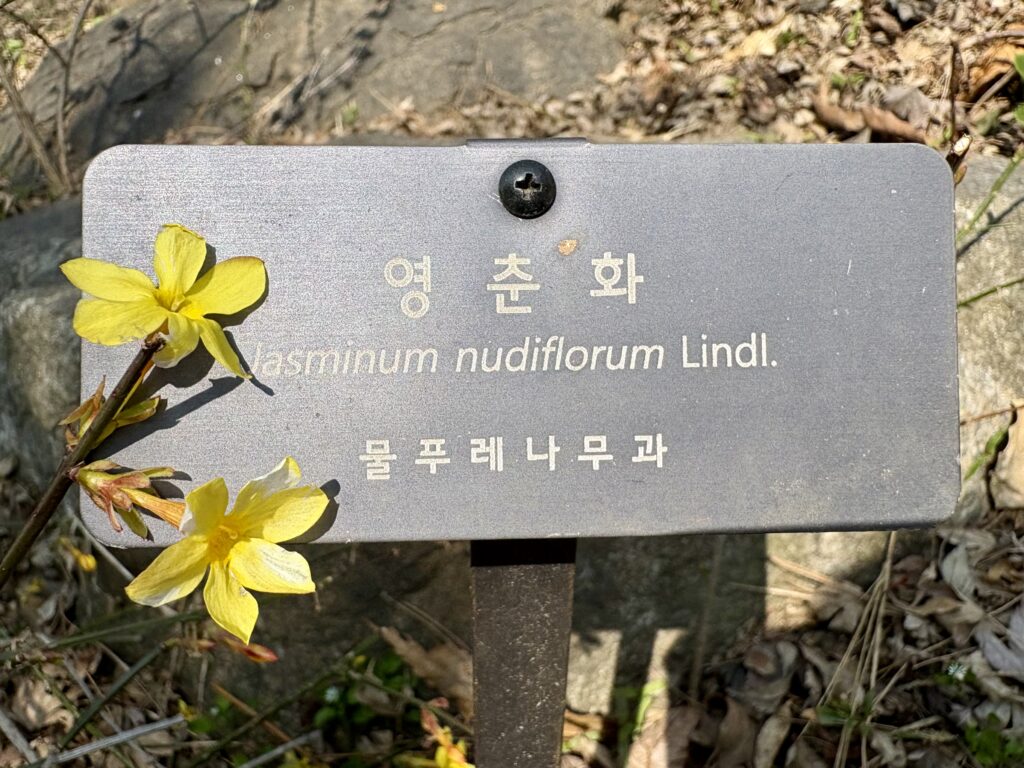
Adjacent to it was the “Youngchunhwa” (Winter Jasmine).
From a distance, its yellow hue led me to mistake it for forsythia, but closer inspection revealed distinct petal differences.
The name tag confirmed its identity as “Youngchunhwa”.
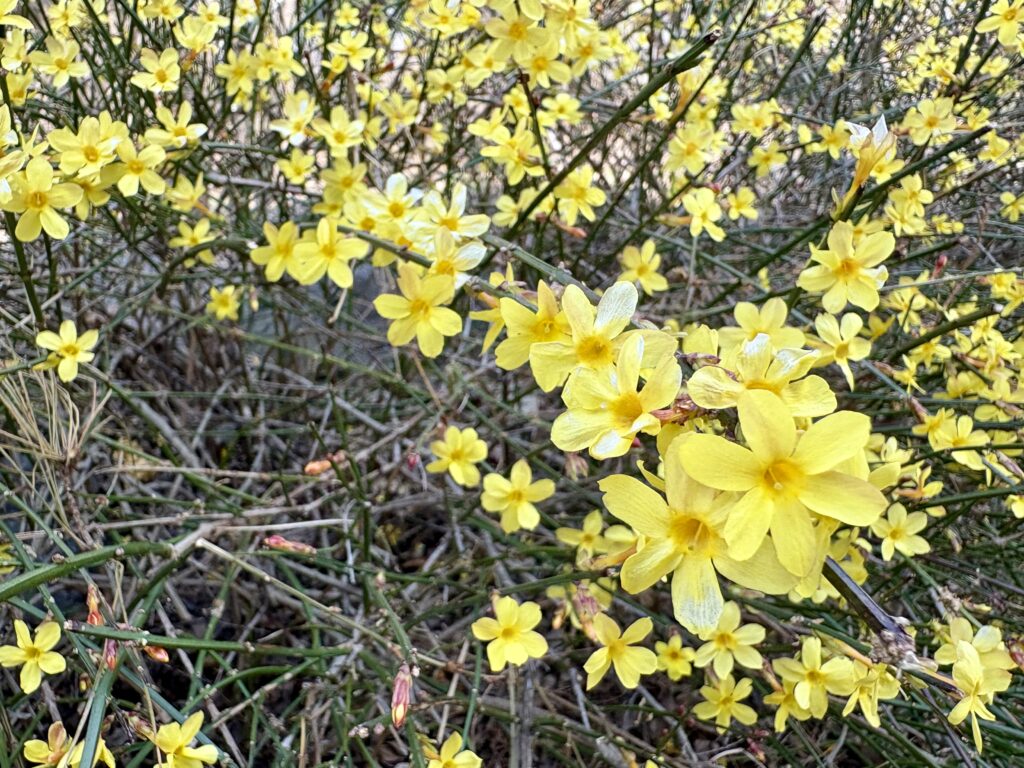
“Youngchunhwa” flourished more abundantly in sunlit areas than in shaded ones.
It’s among the first plants to bloom before spring’s full arrival, often hailed as a herald of the season.
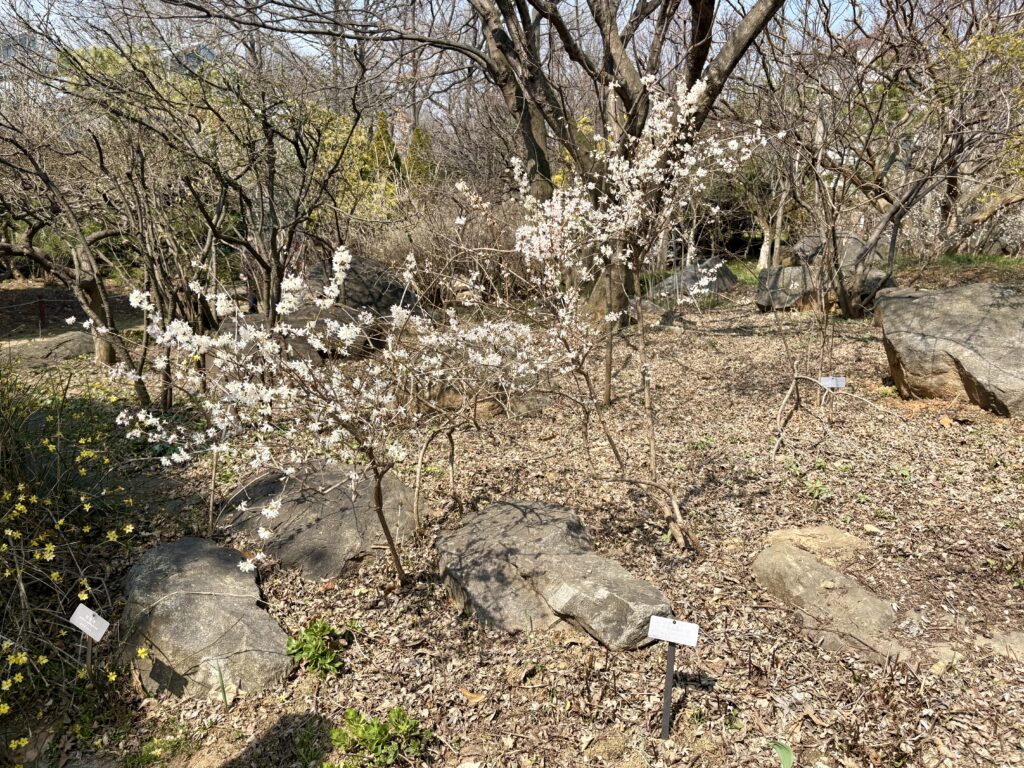
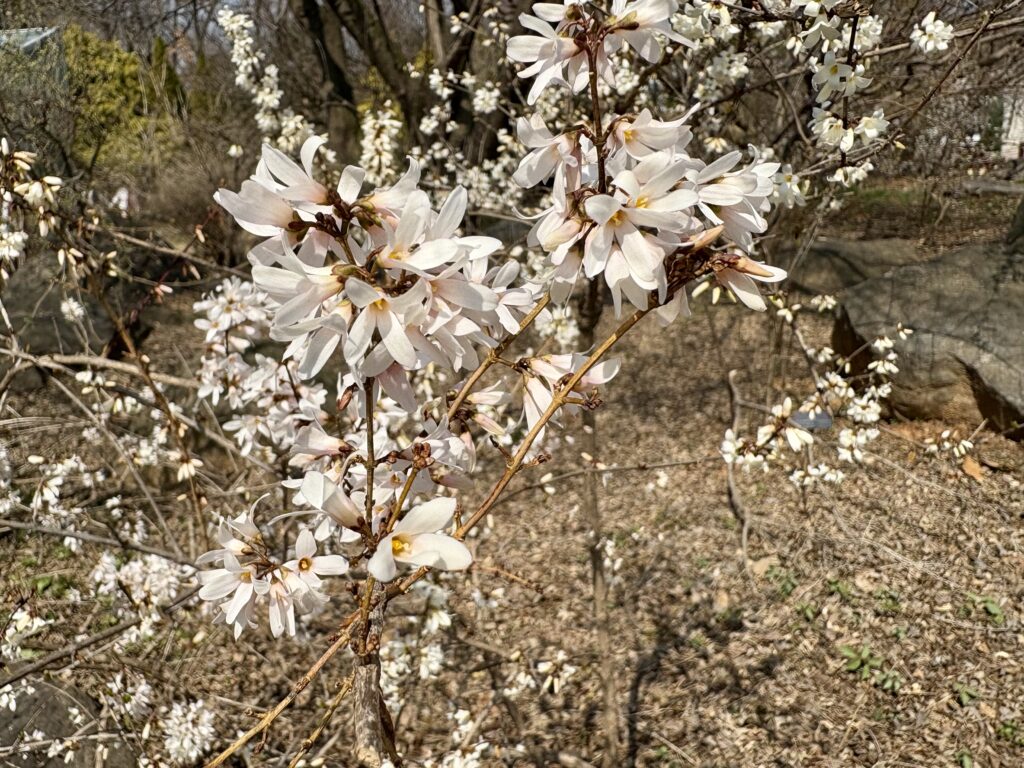
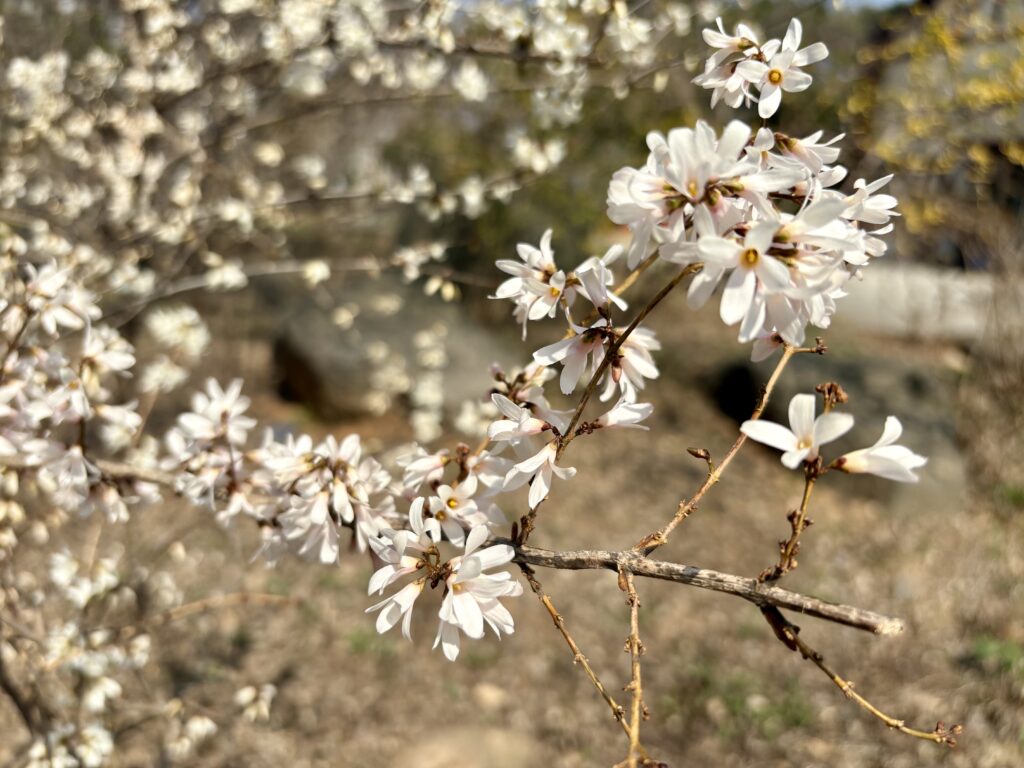
Nearby, the “Misennamu” (White Forsythia) was in bloom.
The “Misennamu” tree was also in full bloom.
It is a rare plant species, indigenous to Korea.
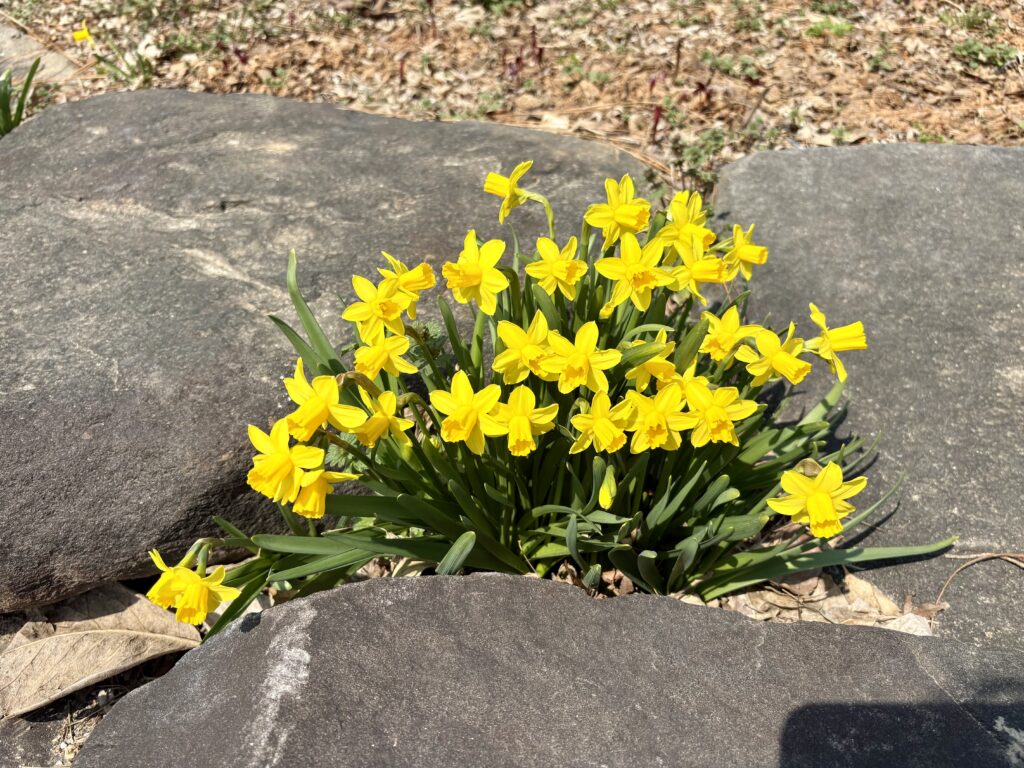
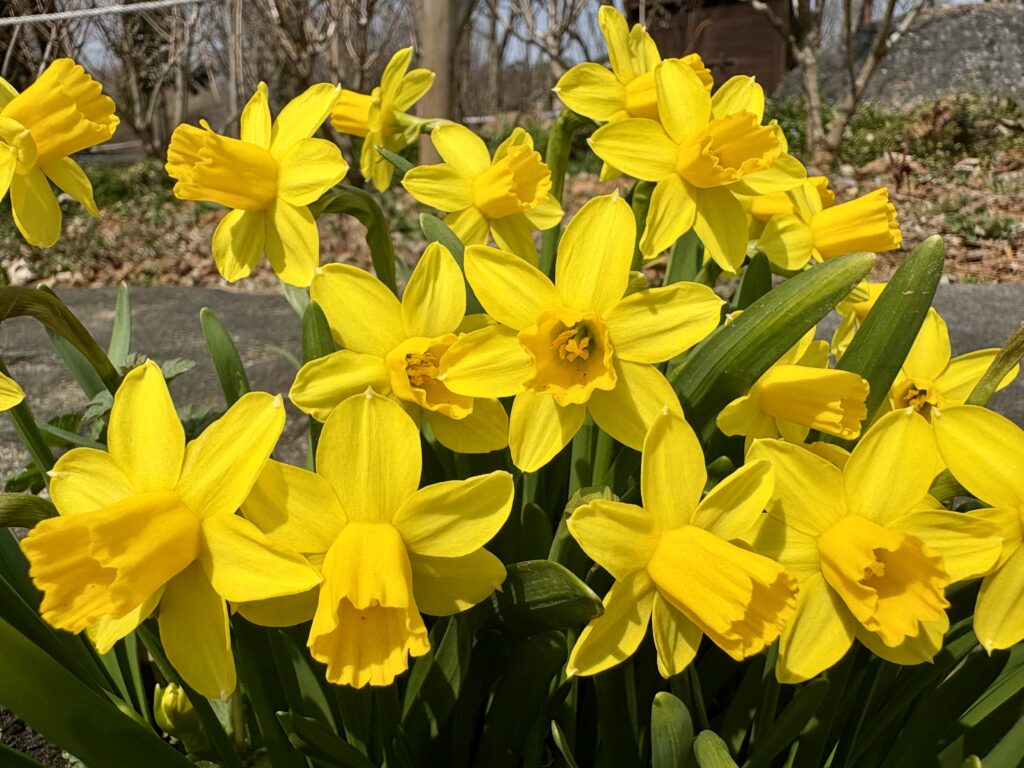
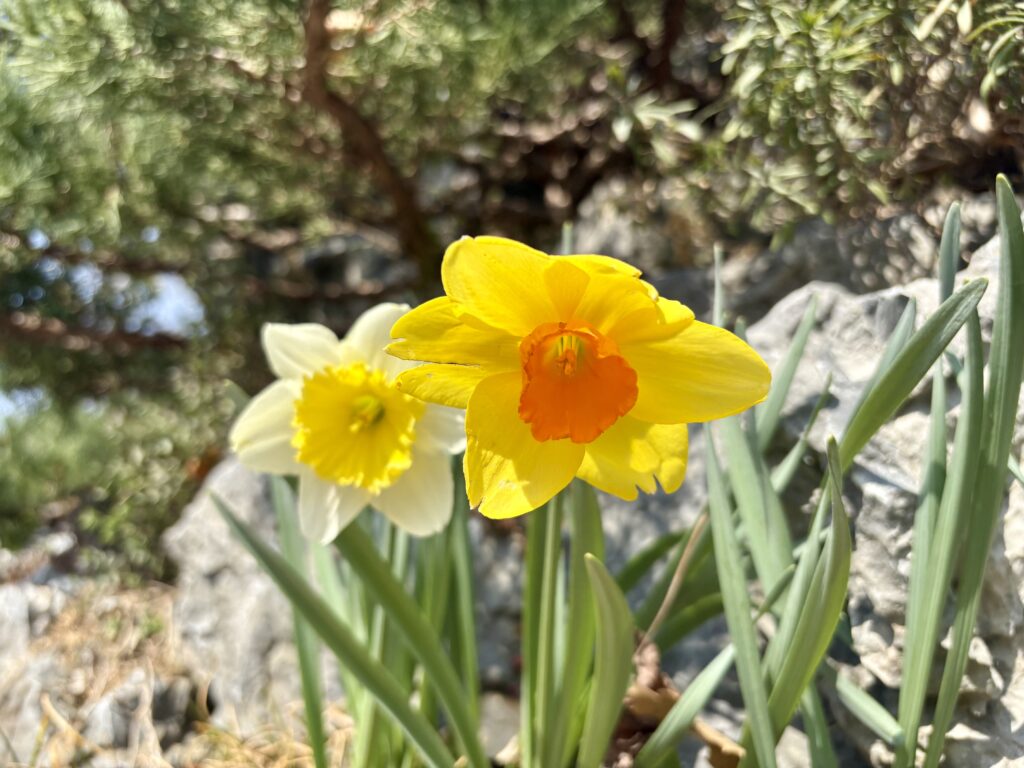
“Daffodils” were the most prevalent flowers at Jeonju Arboretum.
Yellow daffodils dotted the rocky terrain, showcasing their radiant beauty.
The yellow daffodils seemed to emanate the very essence of spring.
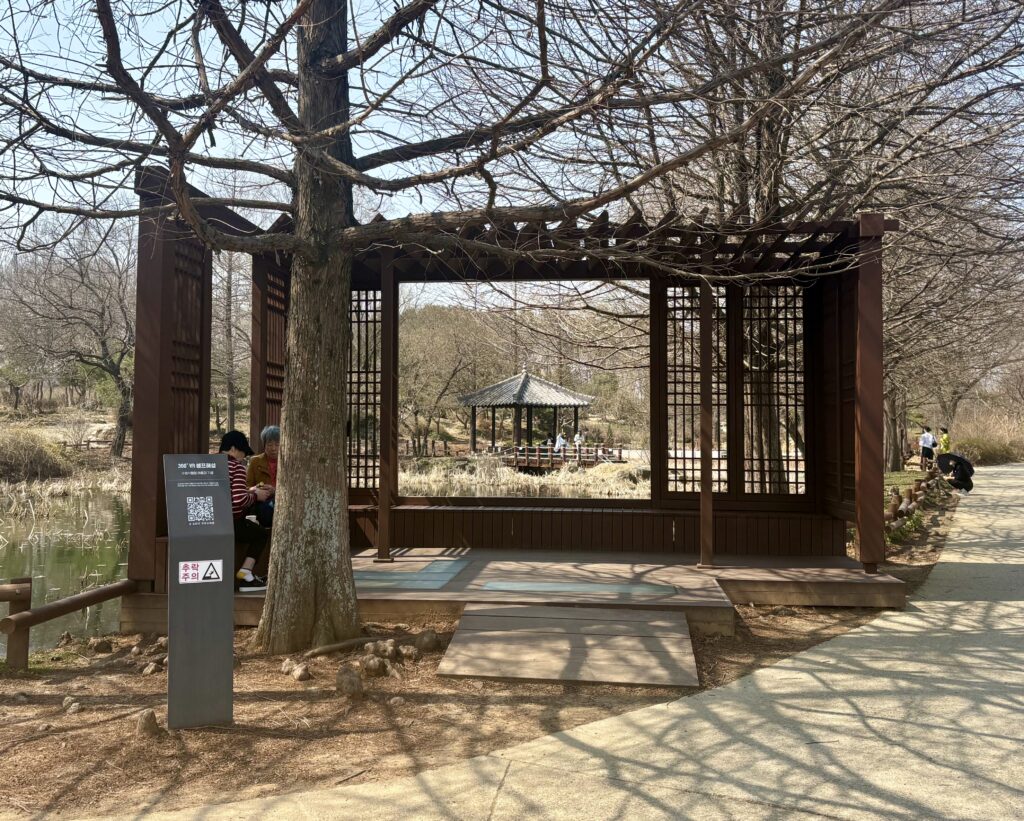
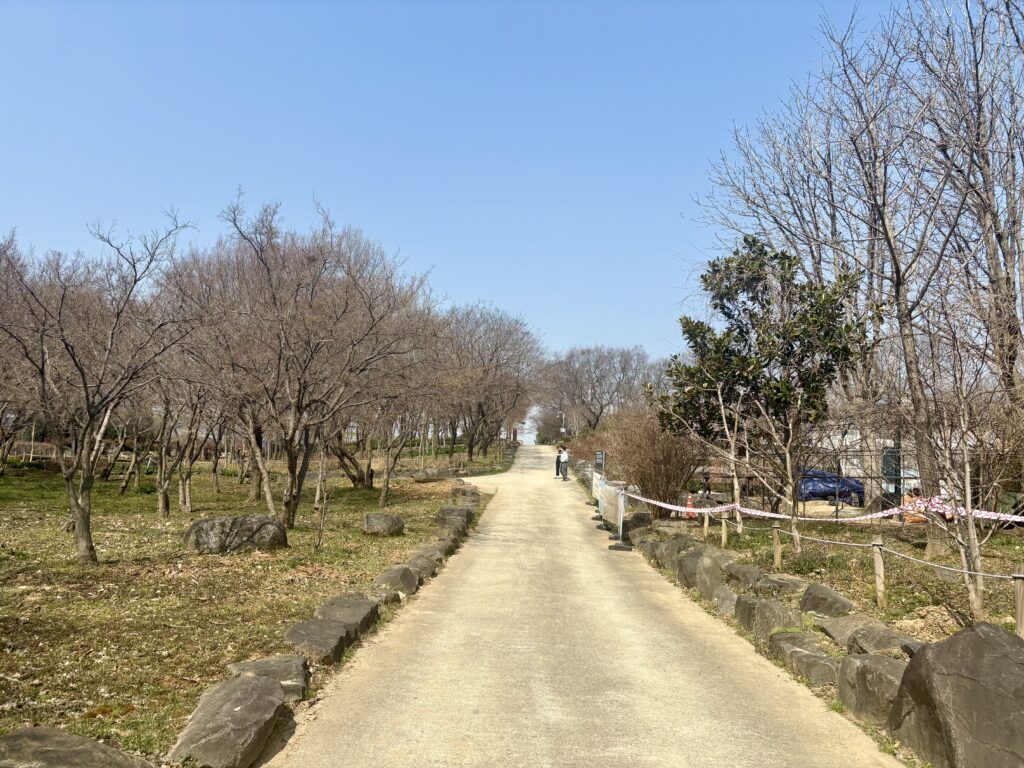
After passing the photo zone pavilion and the scenic resting area by the pond, I proceeded along the back path.
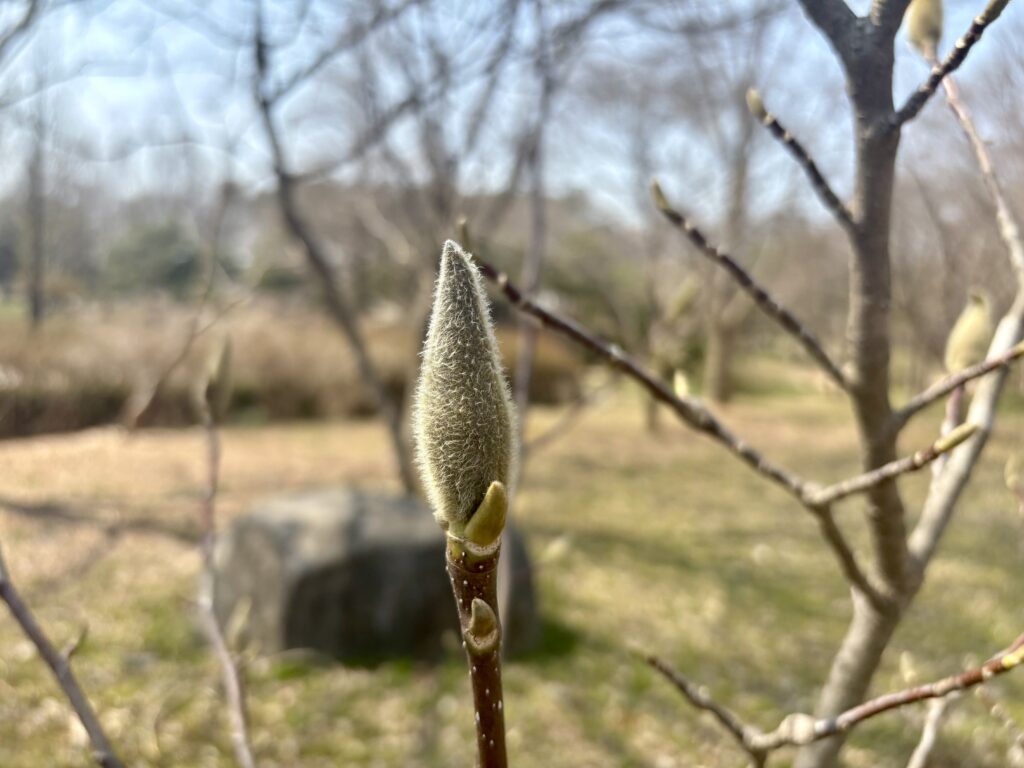
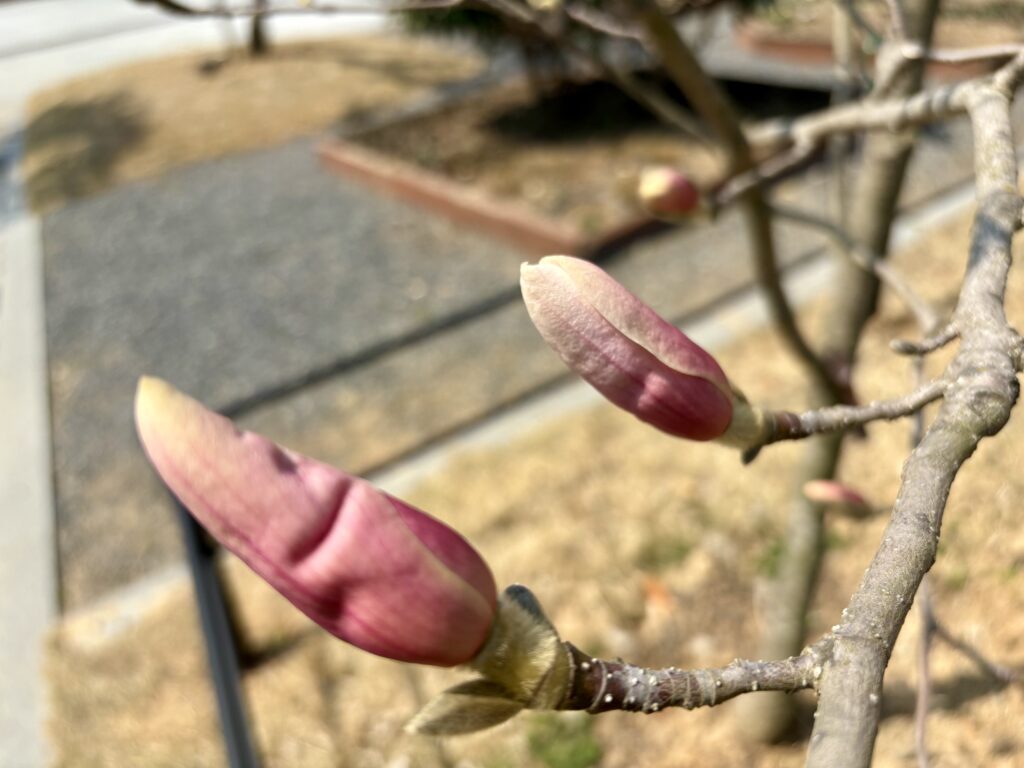
Magnolia trees were scattered throughout the area.
Although their flowers were not yet in full bloom, the warm weather suggested they would soon open.
Jeonju Arboretum features various magnolia varieties, each with differently colored flower buds.
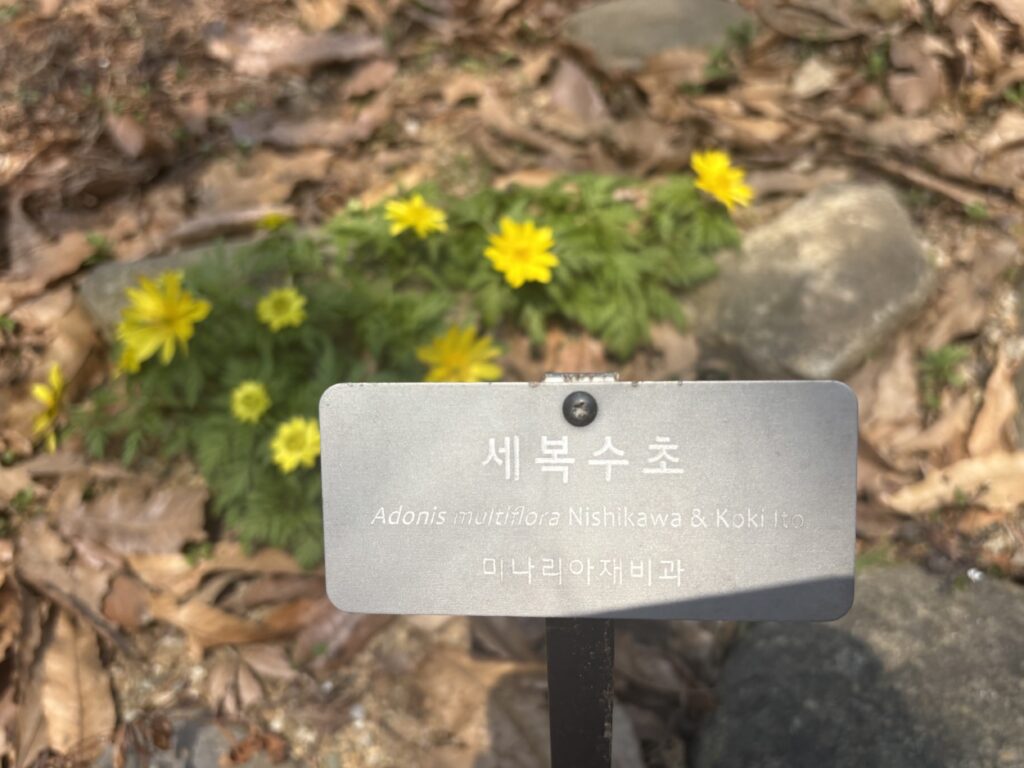
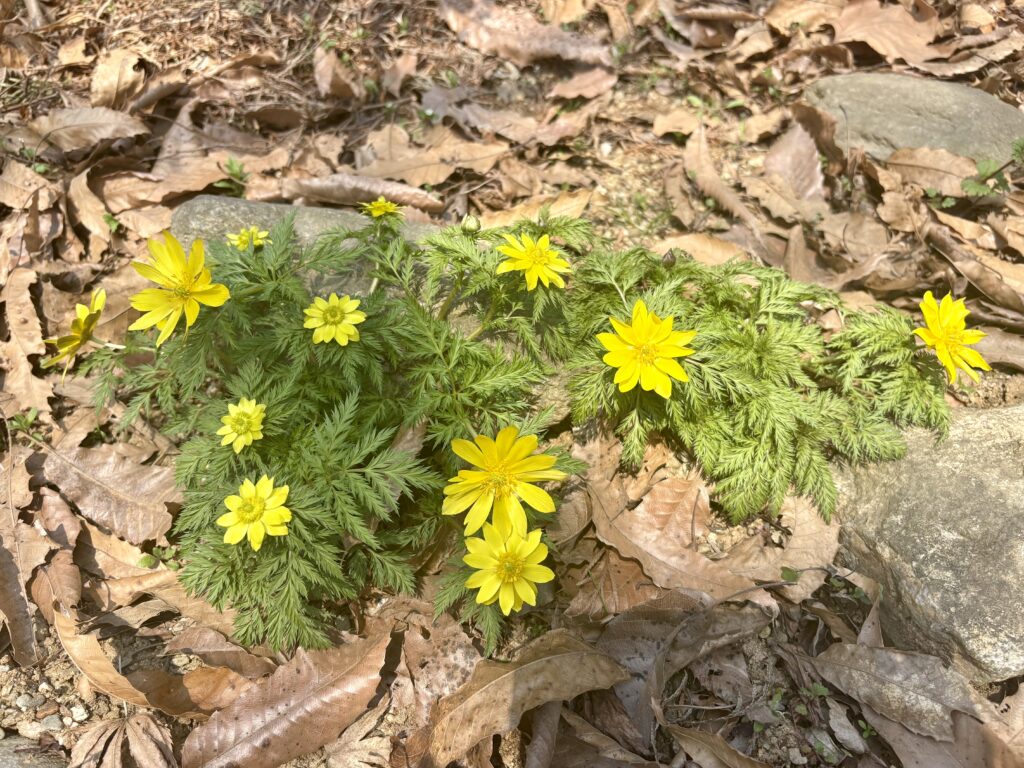
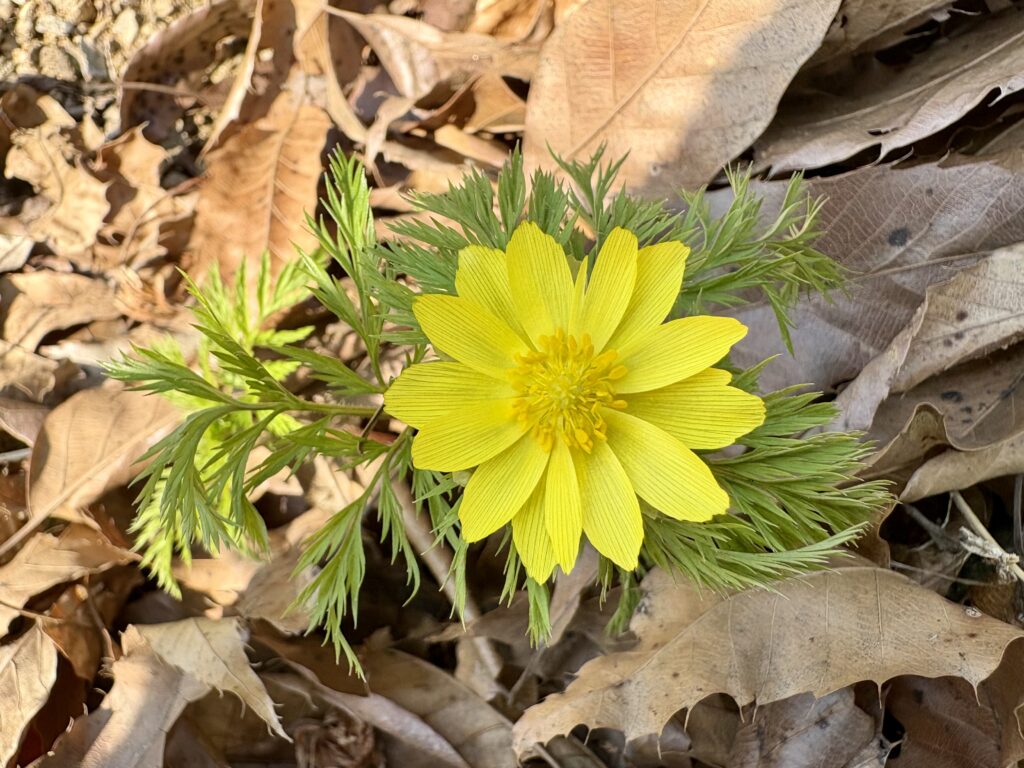
I also discovered another harbinger of spring, the “Seeboksoocho” (Korean Winter Hazelnut).
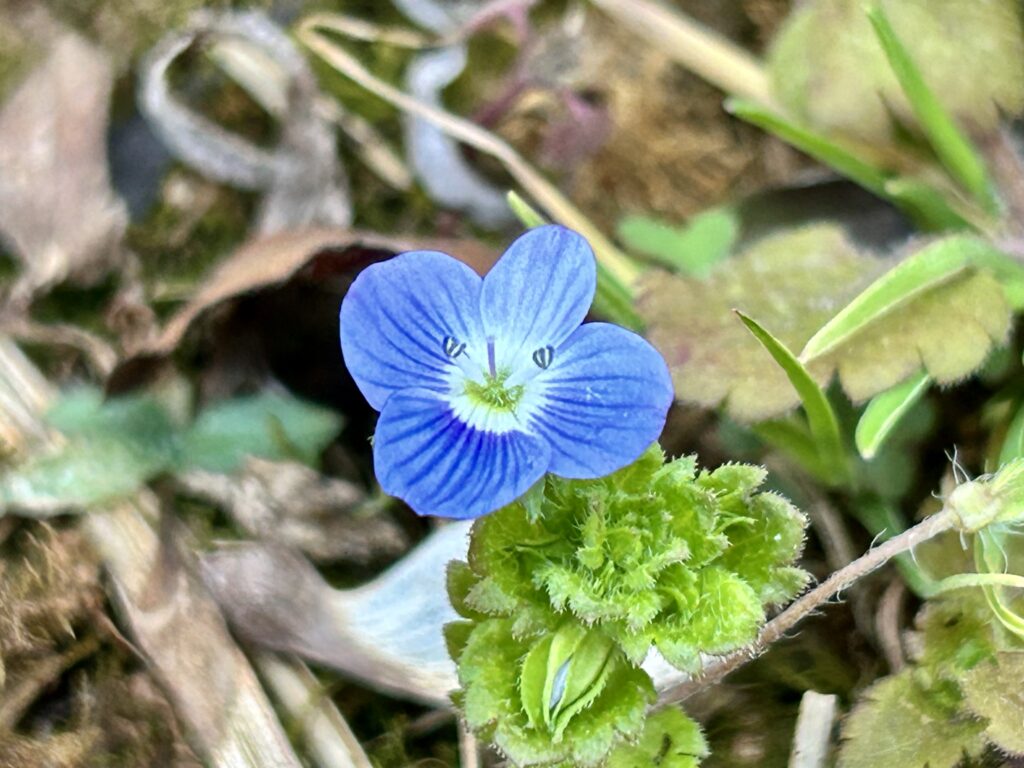
And I spotted blue “Spring Bellflower” (Campanula) flowers.
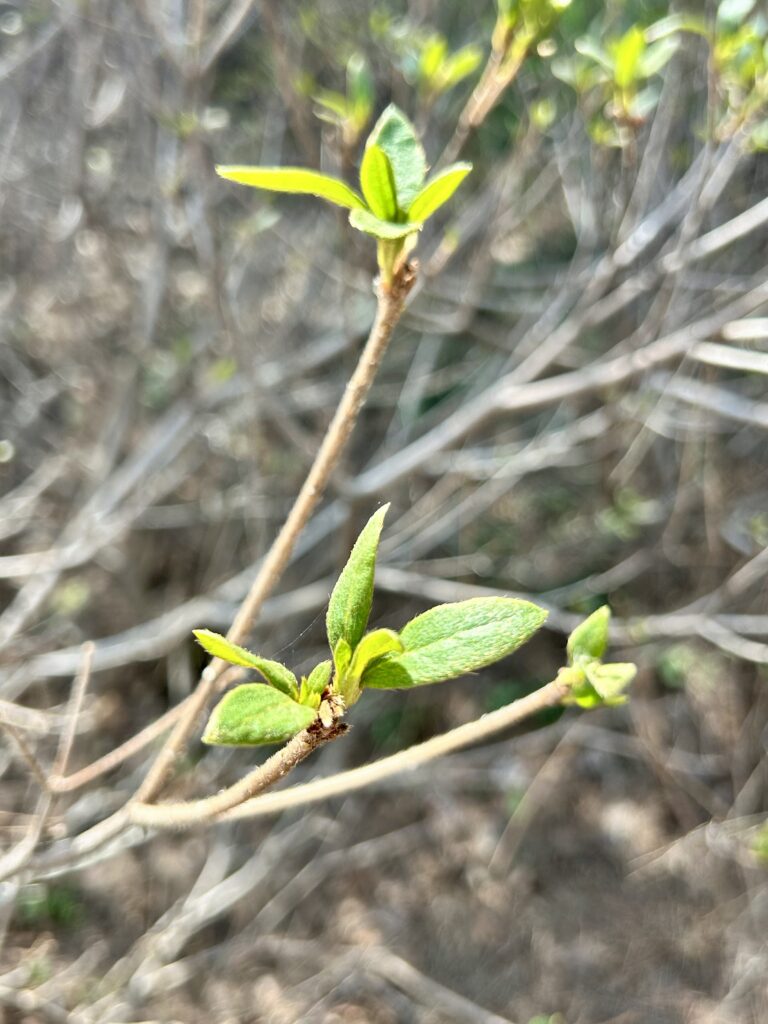
Observing the trees closely, I noticed new shoots sprouting, to prepare for spring.
Soon, the entire arboretum will likely be transformed into a lush, green landscape.

Many spring flowers will soon grace the areas marked with name tags.
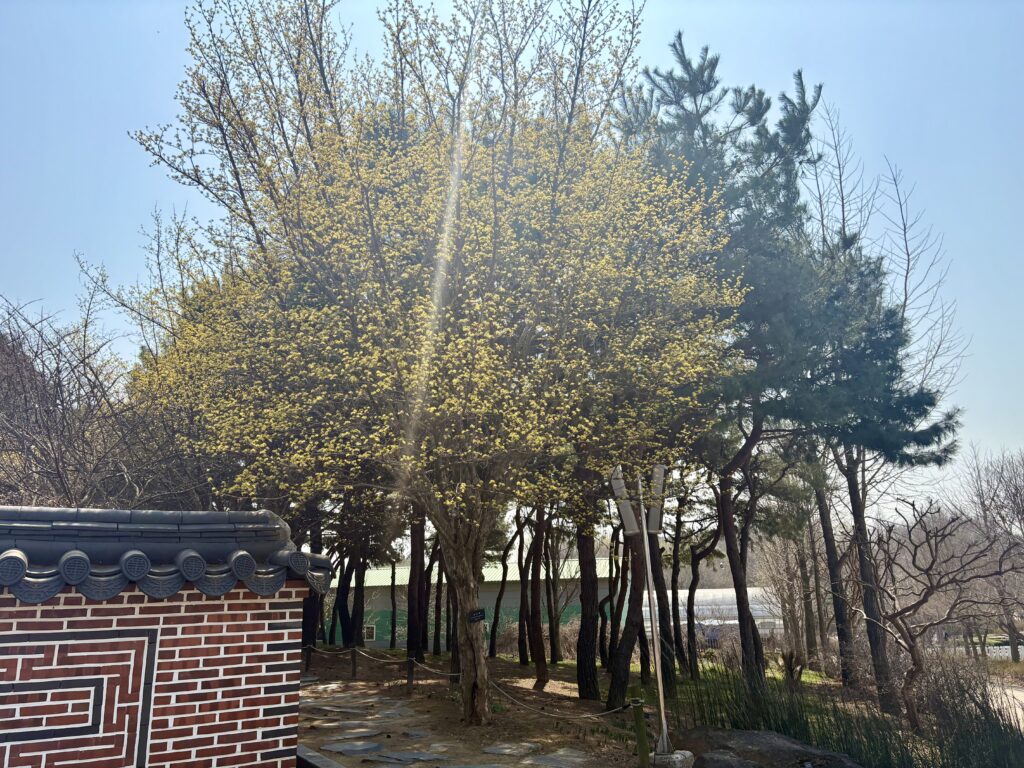
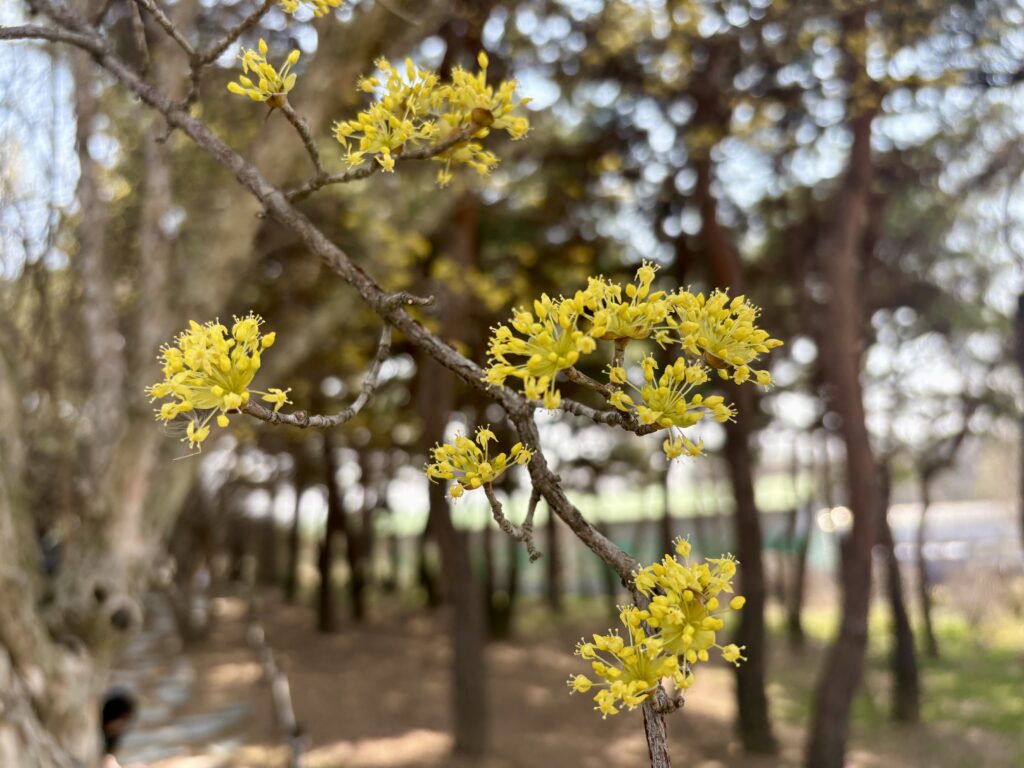
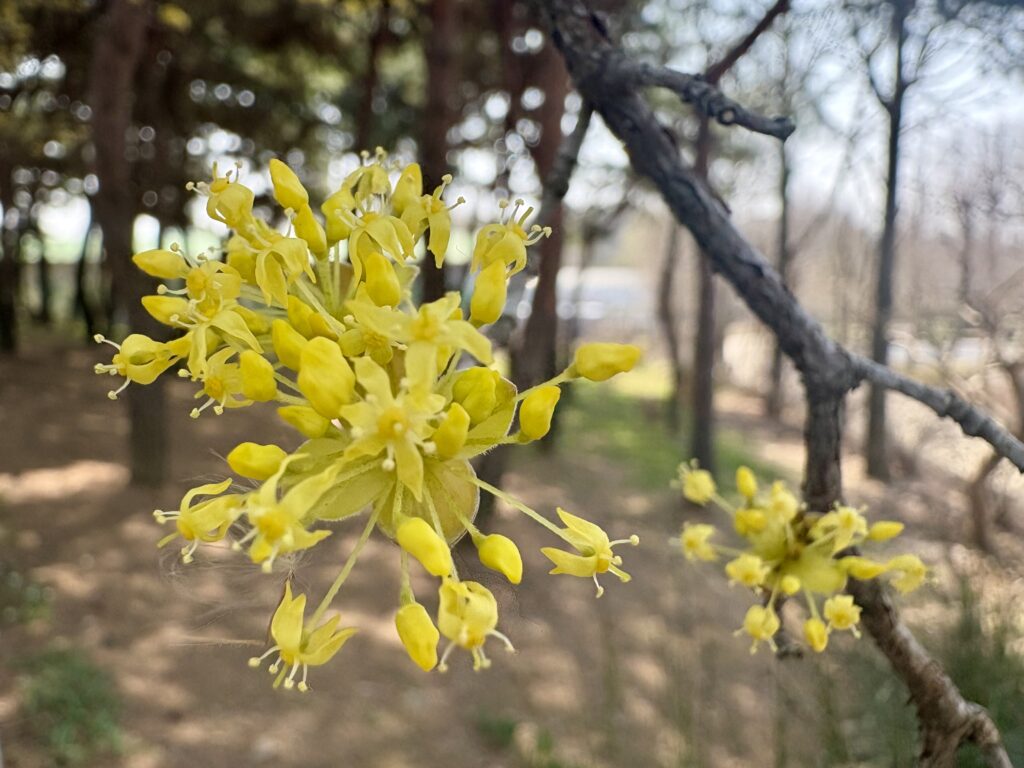
The “Sansuyu” tree, with its impressive stature, was blooming with spring flowers.
Upon closer inspection, I saw tiny yellow flower buds beginning to unfurl.
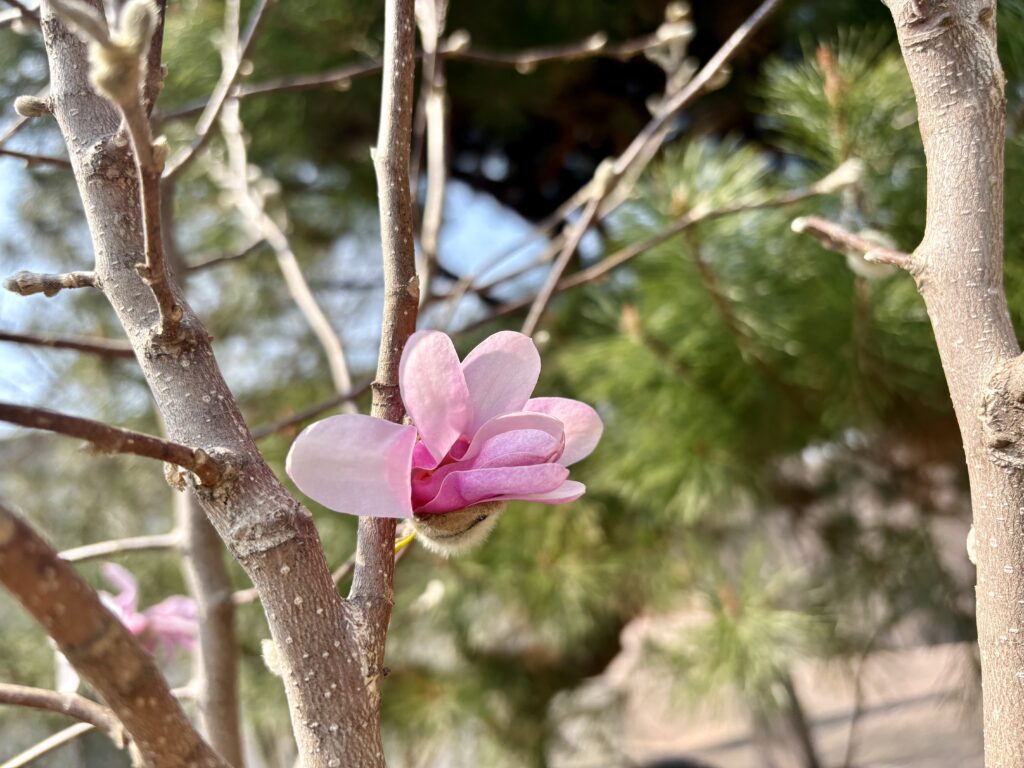

On the opposite side, pink flowers caught my eye, and upon approaching, I discovered a large-flowered magnolia known as “Big Bertha.“
The pink flowers bore a resemblance to cherry and plum blossoms.
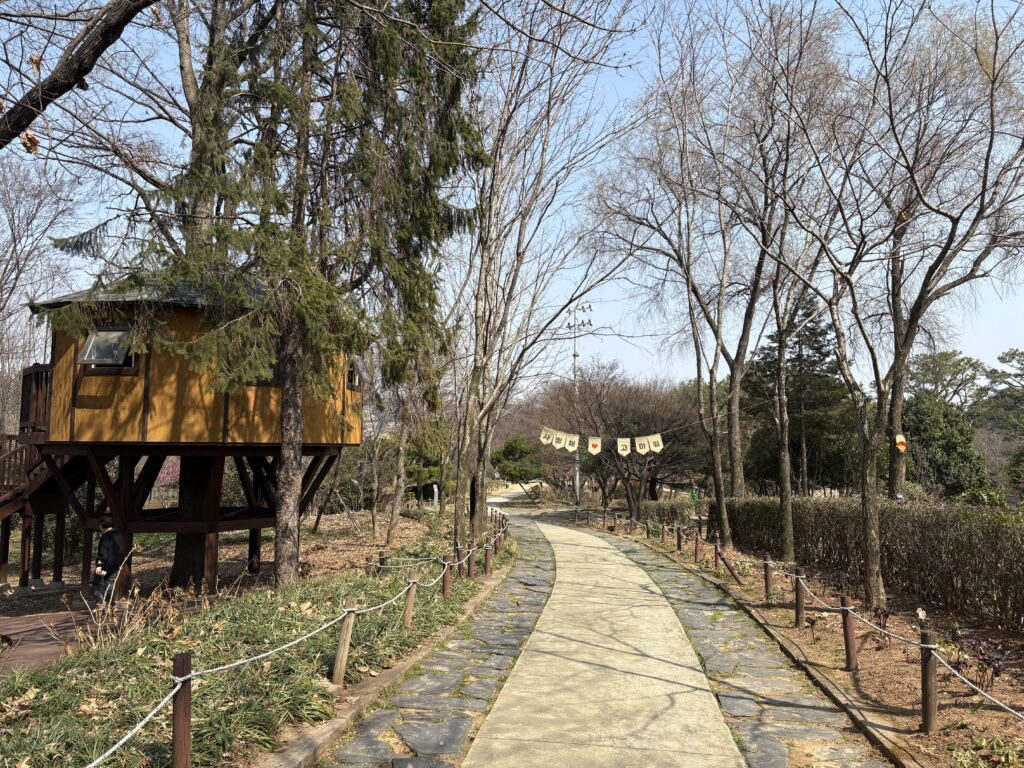
Jeonju Arboretum is quite expansive, offering a delightful exploration of diverse areas.
Next, I headed towards the Happy Rest Area and Tree House.
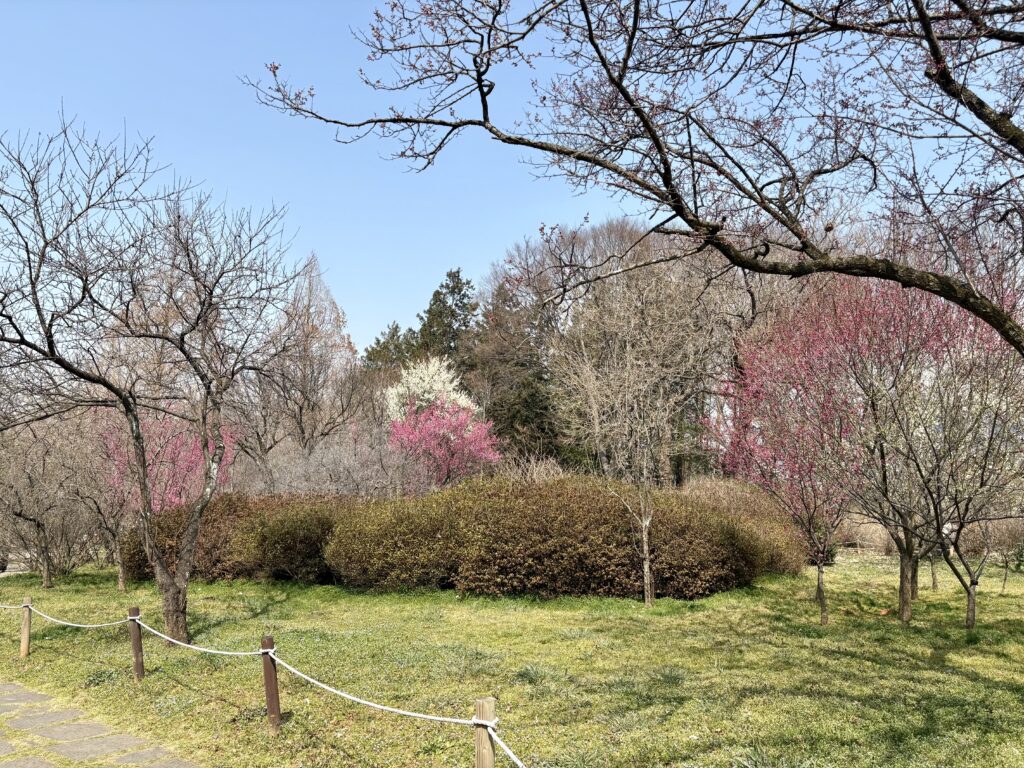
Following the path, I spotted pink and white flowers in the distance.
When thinking of spring, plum trees come to mind.
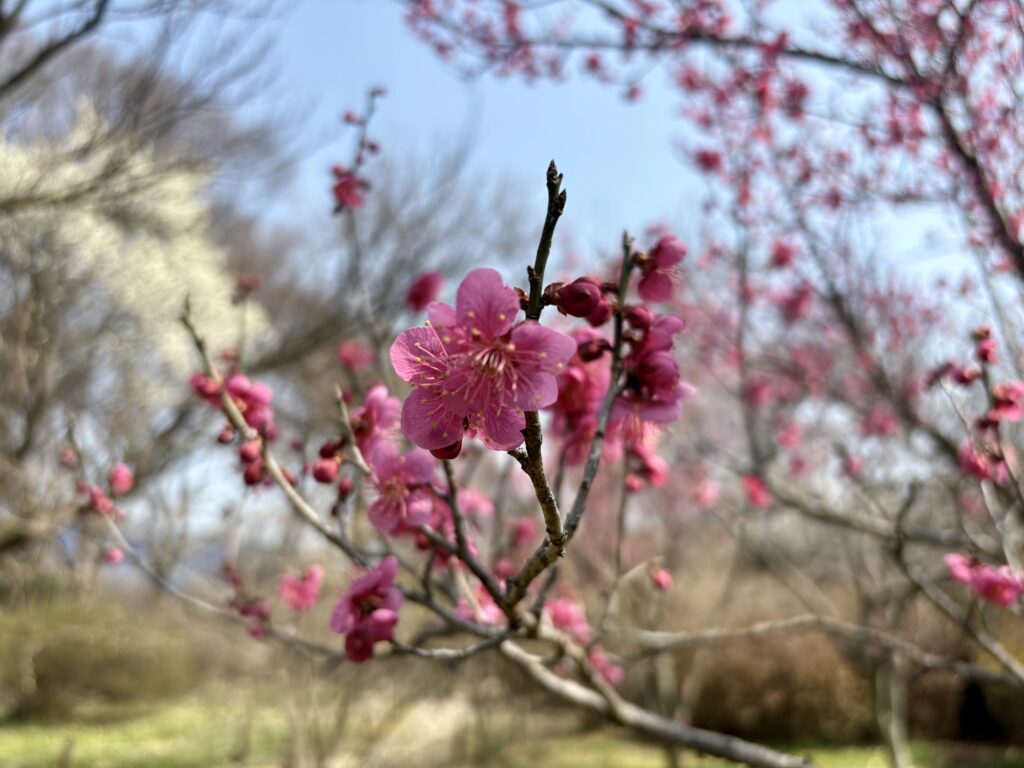
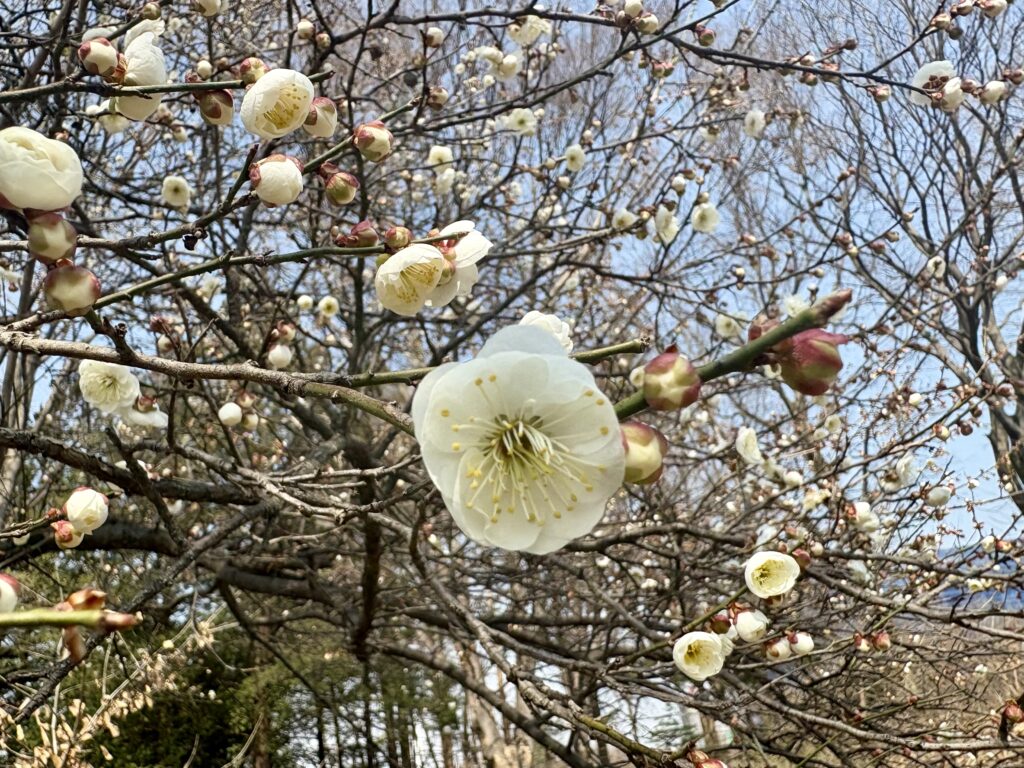
These ‘Hongmae’ (red plum blossoms) and white ‘Maesilnamu’ (plum blossoms) flowers are definitely distinct from the large star magnolia ‘Big Bertha’.
If the weather warms up a bit more and they fully bloom, they will be even more magnificent.
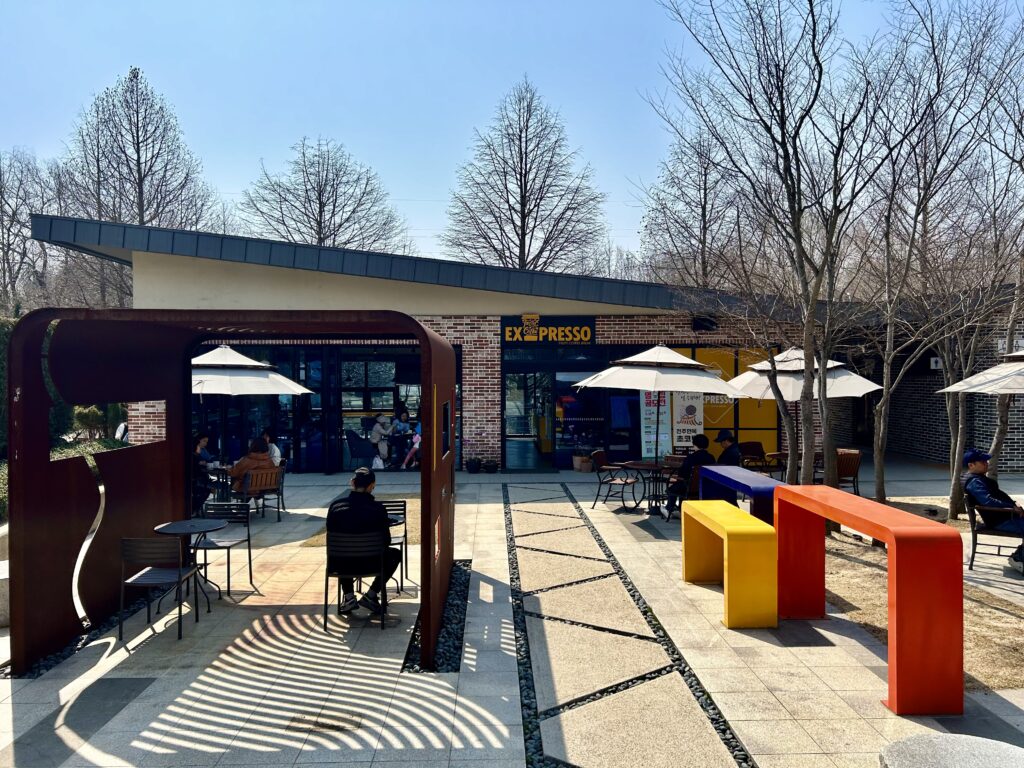
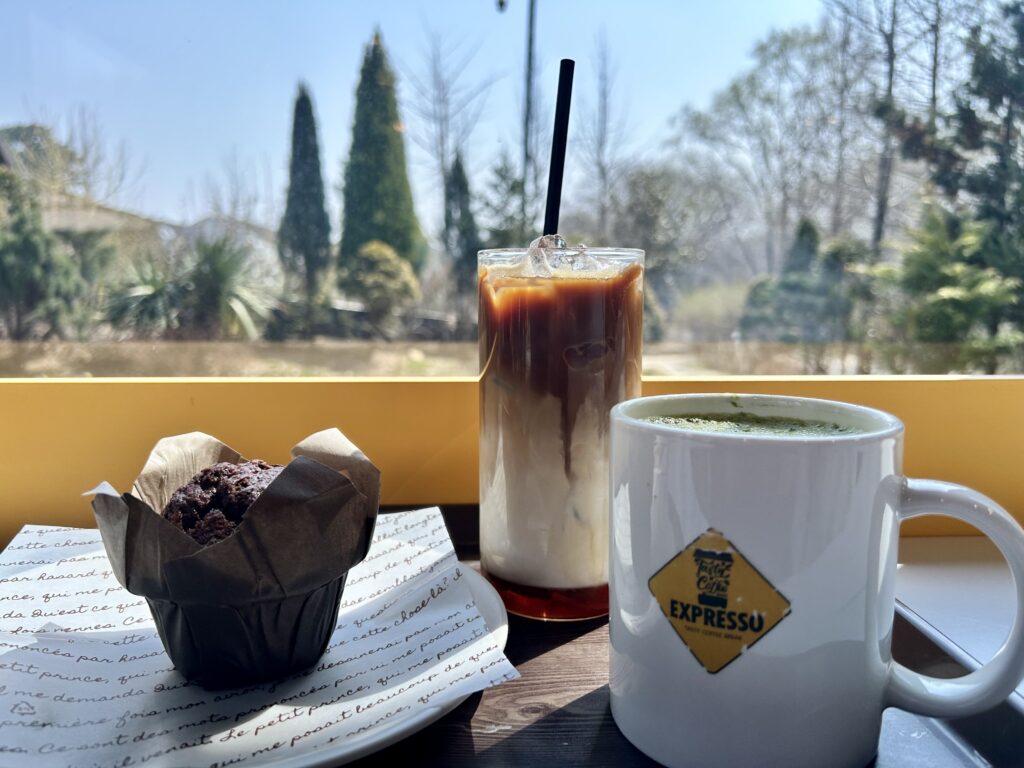
After exploring Jeonju Arboretum, I visited a café called EXPRESSO near the Landmark Plaza for a relaxing tea break.
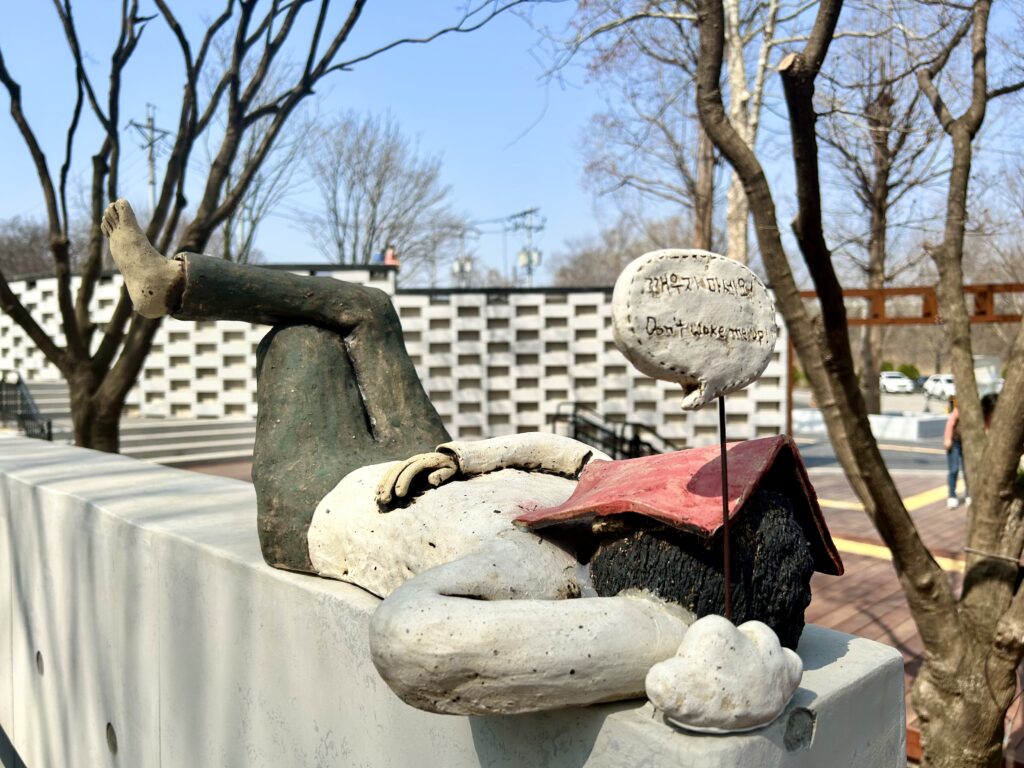
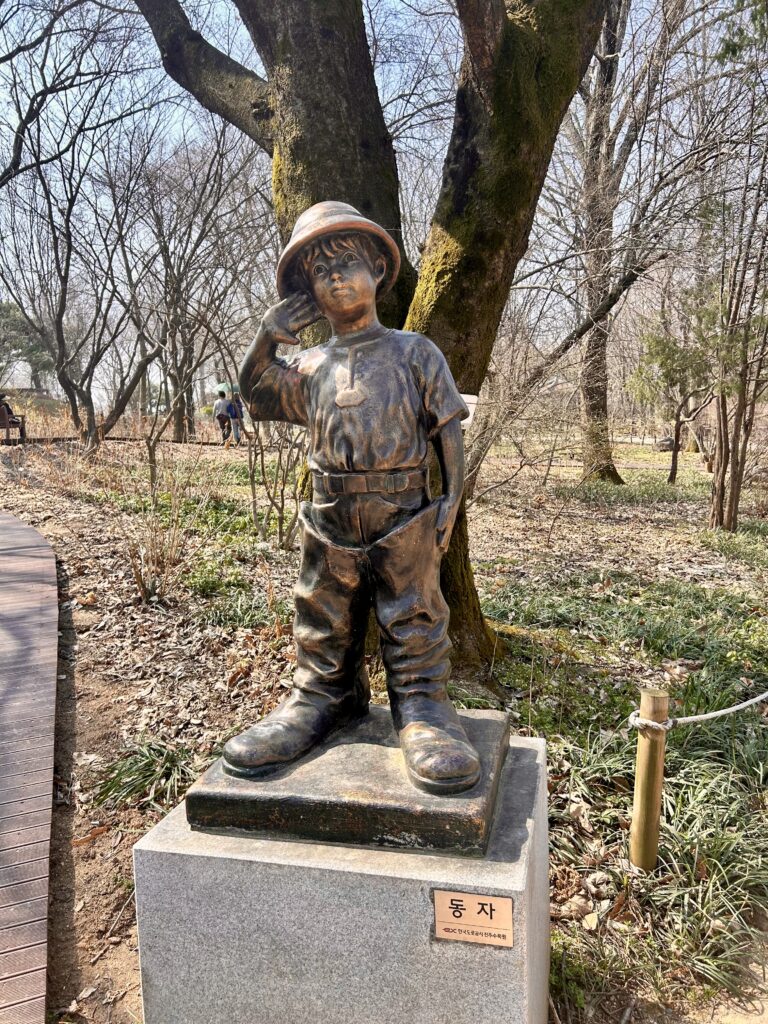
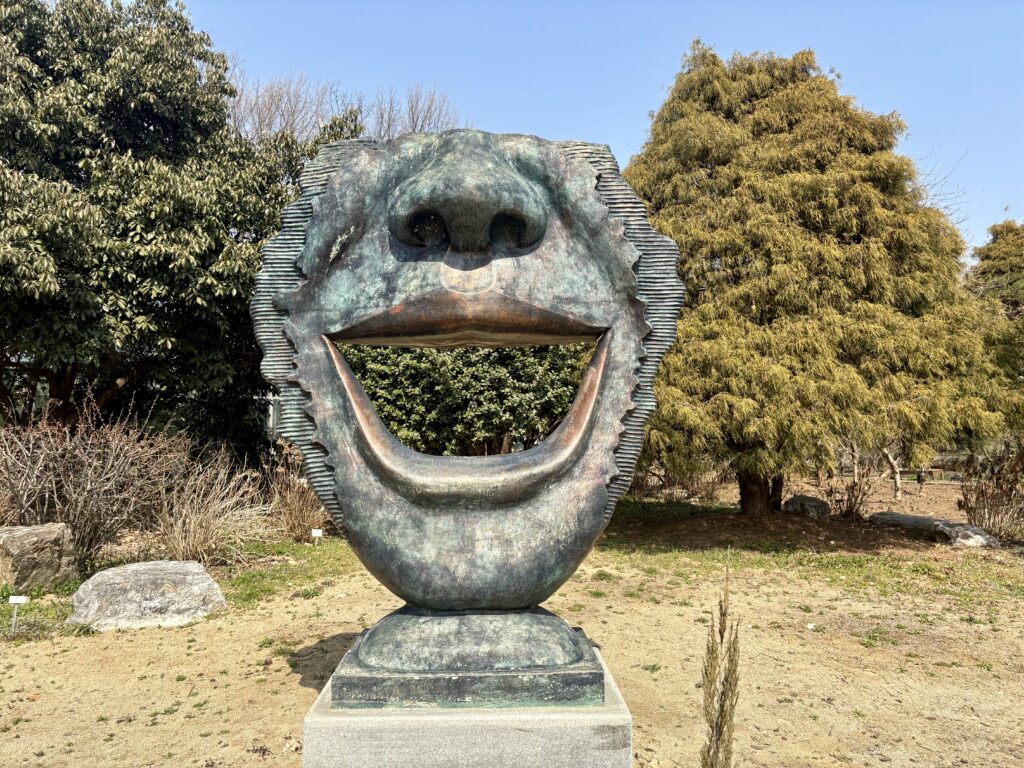
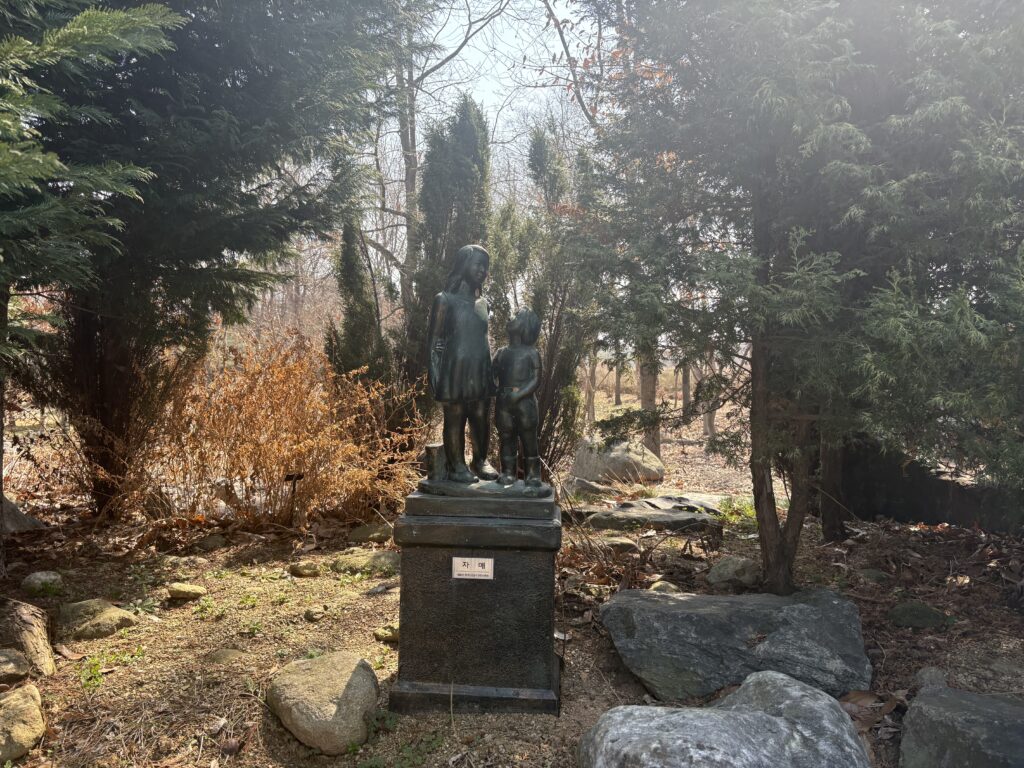
Numerous sculptures were scattered throughout the grounds, providing visual interest and preventing the vast area from feeling monotonous.
And that concludes my weekend excursion to Jeonju Arboretum.
I suggest experiencing the true essence of spring at Jeonju Arboretum by inhaling the fragrant air and capturing lasting memories with beautiful photos amidst the spring blossoms!
📍Jeonju Arboretum
✔️Click on the image to view other posts



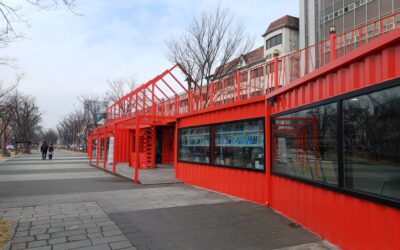
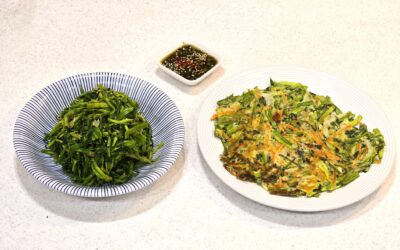
최신 댓글